M60A3TTS
Posts: 4014
Joined: 5/13/2011
Status: offline

|
Preparations for summer
During the period of the raputitsa from 6 April-4 May 1944, a thorough review by the STAVKA was conducted on the strategic balance of forces and prospects for a successful summer offensive in the coming months. It was determined that the Germans and their allies would be ejected from the USSR but that problems would develop over time. The chief problem that could be anticipated was that in three years of war, das Ostheer had not suffered significant manpower losses and indeed was in some respects at the peak of fighting power. As the Germans fell back, their large manpower, currently 3.8 million would fall back in to prepared positions again and again. This would enable them to eventually slow any advancing Soviet forces to such an extent that the war might drag on for another two years. Prospects of an upcoming Anglo-American invasion somewhere in northern France might shorten that period to a degree, but Stalin feared that by the war’s end the British and American forces could be hundreds of miles east of Berlin and threaten his future plans of an eastern Europe dominated by governments friendly to Moscow. The Tehran Conference held in November 1943 had laid the groundwork for this, but these commitments might be thrown aside by London and Washington should their armies by reaching the German-Polish borders.
It was for this reason that Stalin’s instructions to the Soviet High Command and the STAVKA was to identify the best opportunity for destroying as large a part of the German forces that would be tightly holding onto their defensive positions rather than withdrawing westwards as the summer season arrived. The conclusions of the STAVKA intelligence sections indicated that the German forces north and south would likely give some ground where fighting had been constant. The center was somewhat of a question. Generals Tyulenev and Chernyakhovsky of 2nd and 3rd Ukrainian Fronts were confident that their forces could be expected to reach the Dnepr before June. Malinovsky’s 1st Baltic Front would be in a position to assault the Dnepr land bridge to the north of 3rd Belorussian Front.
In early April, the 1st Polish Army had been activated and added to the Red Army Order of Battle. Through sheer happenstance, it had been decided to put this army in a quiet portion of the front, in the area of Gomel and to the north of STAVKA’s 35th Army, also recently activated. The original intention was that these two armies should provide a screening force across the hundred mile-wide Pripet Marsh as the Red Army advanced westwards in the summer. By mid-April, the 1st Polish Army was reporting enemy forces in their sector consisting of four or five German infantry divisions.
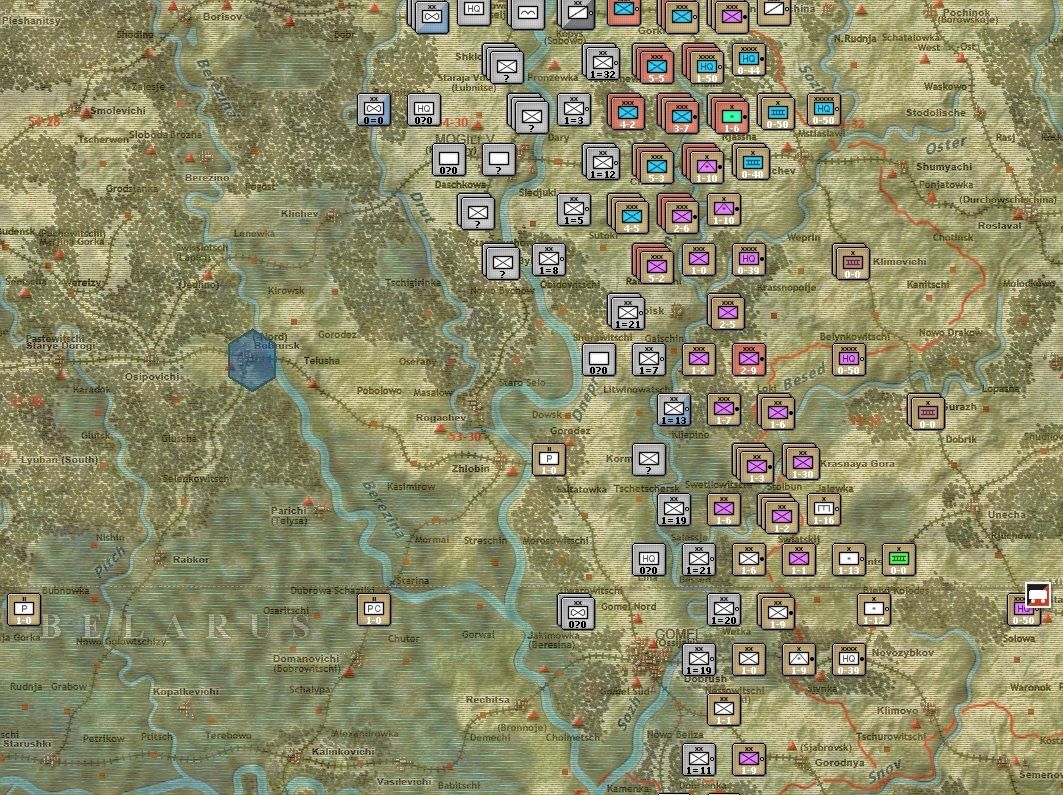
Chief of Staff Vasilevsky and Chief of Operations Antonov over the next several weeks discussed the strength of the relative forces and agreed that there might be an upcoming opportunity in the Mogilev-Gomel area provided that the German defending forces did not change their dispositions in any significant way. Near the end of May, Front commanders were summoned to Moscow to receive the briefing for the upcoming summer strategic offensive.
In order to set the stage for such an opportunity, Malinovsky and Chernyakhovsky were given orders to push their forces in the area of Orsha and Mogilev respectively. By the beginning of June, the critical gains had been made, with Zhadov’s liberation of Mogilev and the Dnepr cleared of enemy forces along the western bank north of the city up to the land bridge. Strong German forces opposed a further advance westwards in this area. To the south around Rogachev, 1st Polish Army was over the Dnepr along with rifle corps from 35th Army now south of the Berezina. A single rifle corps from 2nd Belorussian Front was also over the Dnepr in this area. Defending Rogachev and 40 miles southwest were just four German divisions.
During the first two weeks of June, the 35th and 1st Polish Armies were west of the Dnepr south of Rogachev and still the opposing forces remain unchanged. This was sufficient evidence to go forward with the operation, codenamed Operation Bagration. 3rd Army was transferred from 3rd Belorussian Front and General Armii Chernyakhovsky received Pavel Rotmistrov’s 1st Guards Tank Army. Meanwhile two armies of Bagramyan’s 3rd Ukrainian Front: 1st Guards Cavalry and 2nd Shock Armies along with STAVKA's 3rd Shock Army, rested and refitted, were transferred from the area south of the Pripet and moved into wooded staging areas east of Rogachev. Five rifle corps also moved into position behind 35th Army and into woods southeast of Rogachev on the Dnepr's eastern bank. Supporting artillery and air units were brought into range of the area planned for the breakthrough.
As the buildup continued, the STAVKA deception plan called for minimal air recon in the Rogachev area, accompanied by strikes on airfields west of Mogilev containing German recon planes. Red Army troops immediately facing the four German divisions were not directly reinforced and ordered to be only modestly active in the area, so as not to arouse suspicions. The attack date was set for June 15. The only remaining question was how many German divisions would still be on the west bank of the Dnepr and south of Mogilev on that date.

< Message edited by M60A3TTS -- 12/21/2015 7:13:18 PM >
|
 Printable Version
Printable Version

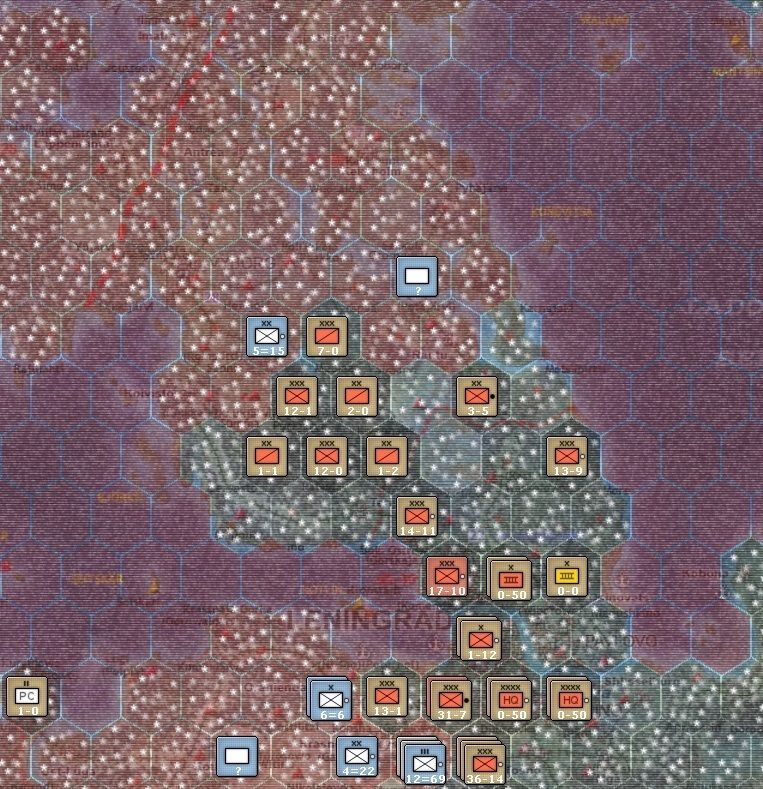

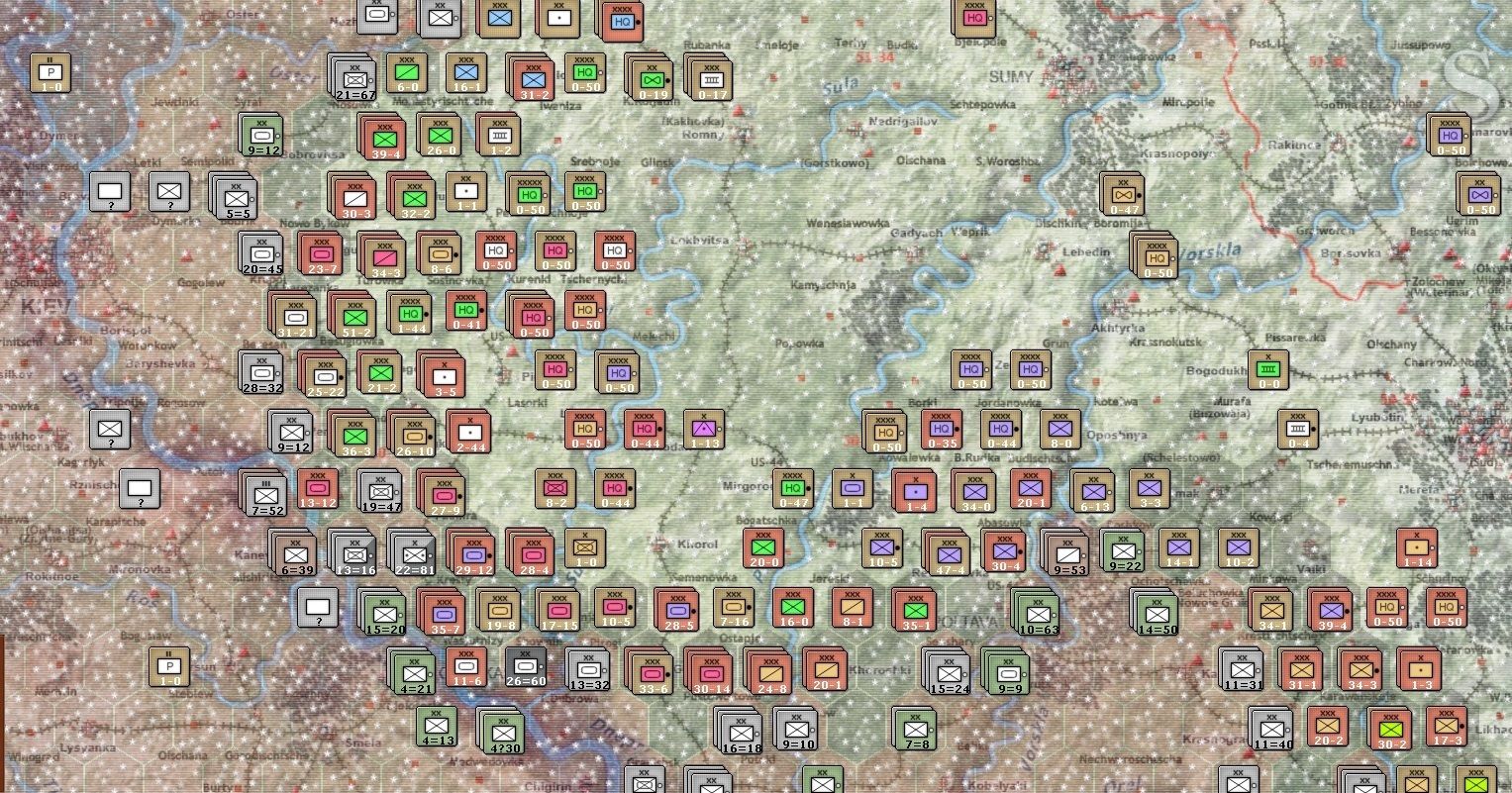







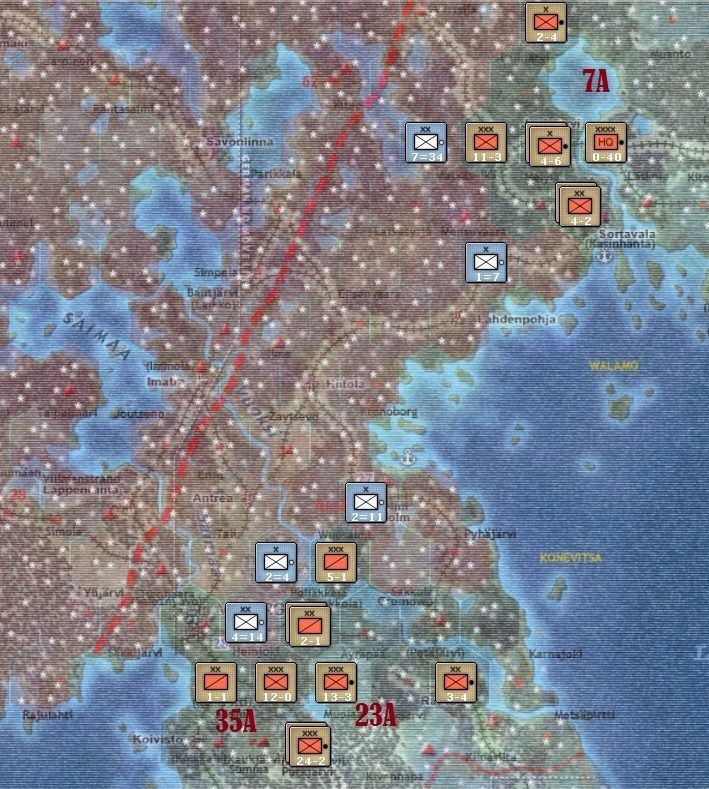
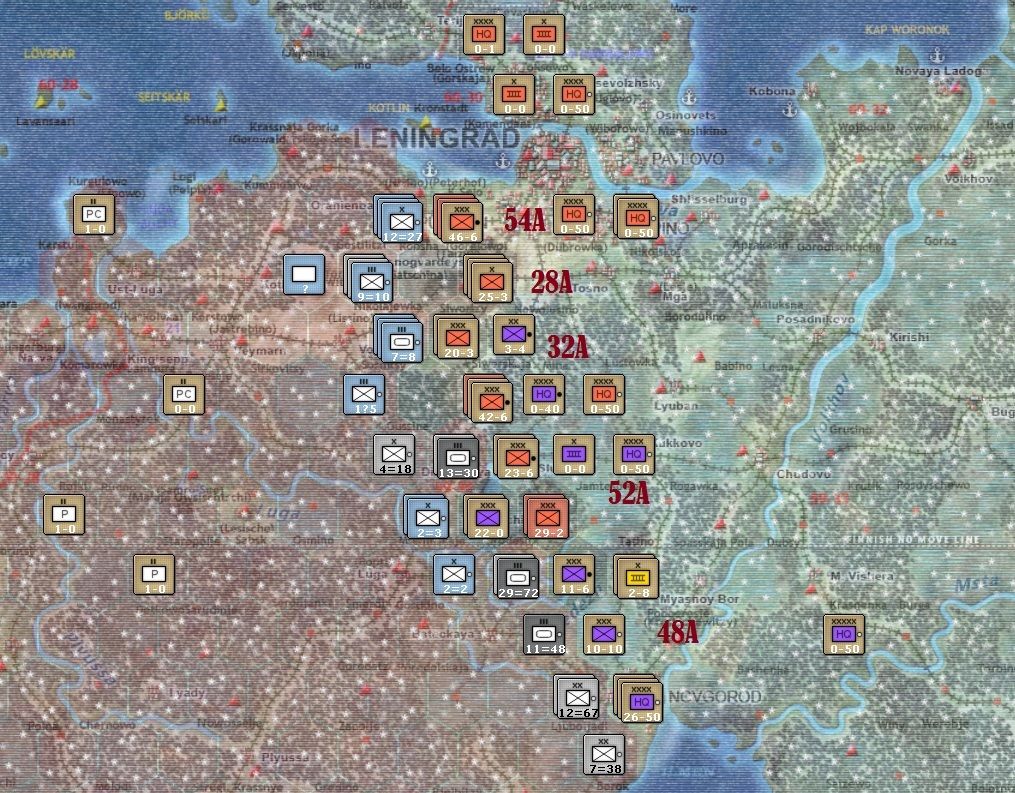

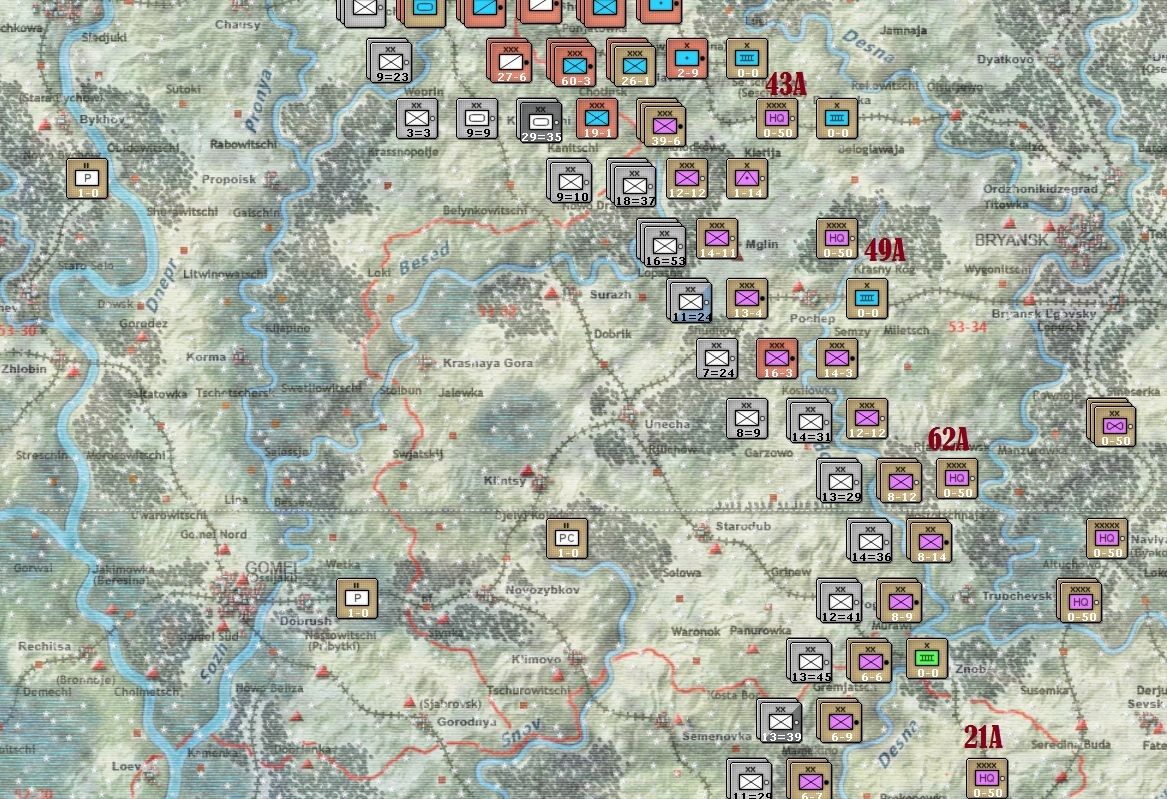

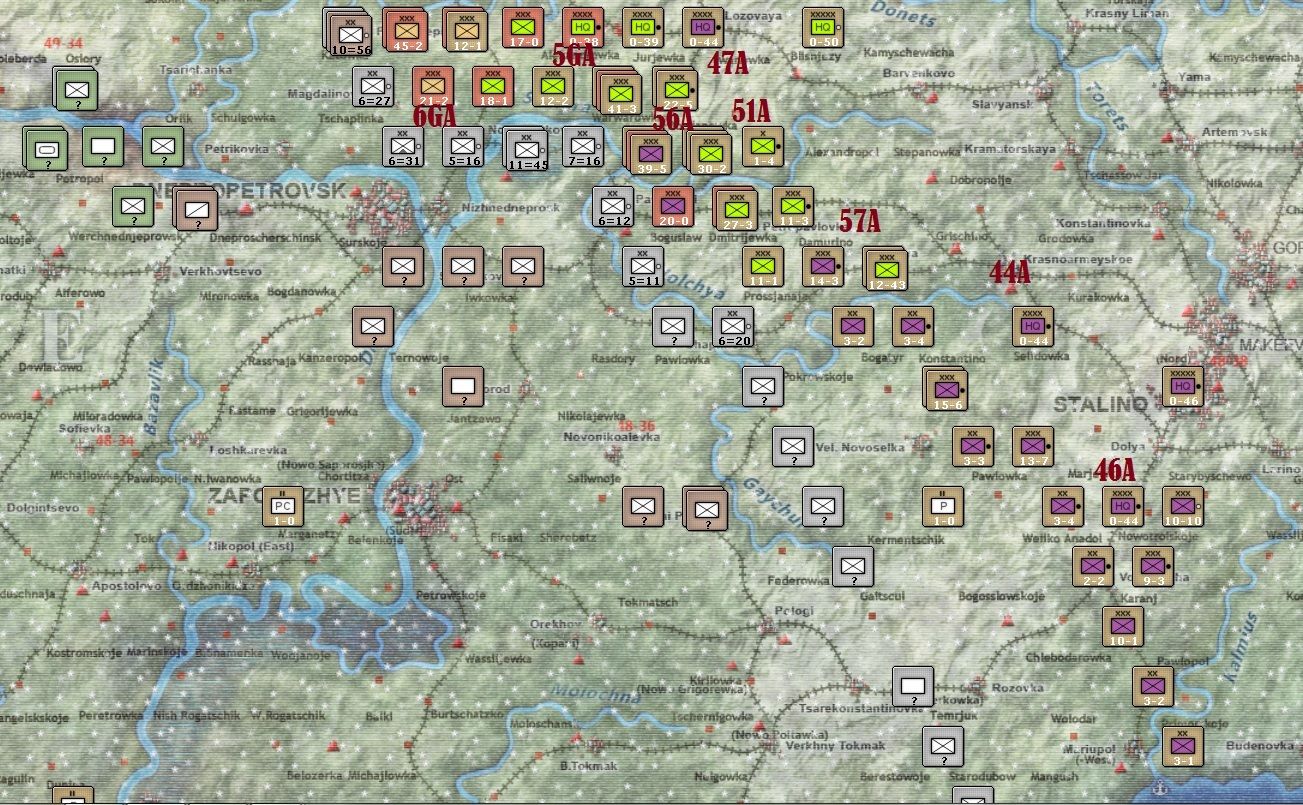
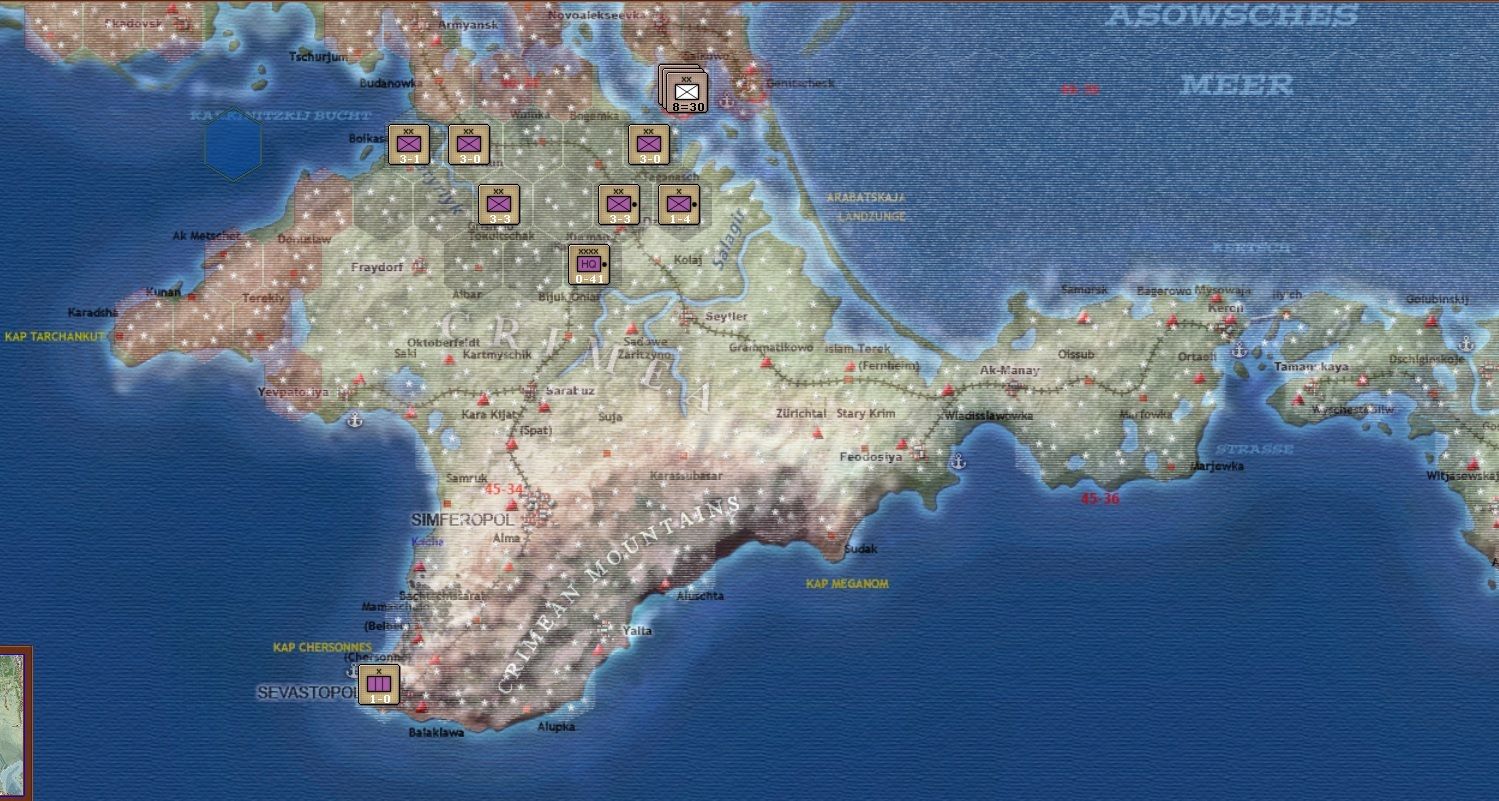
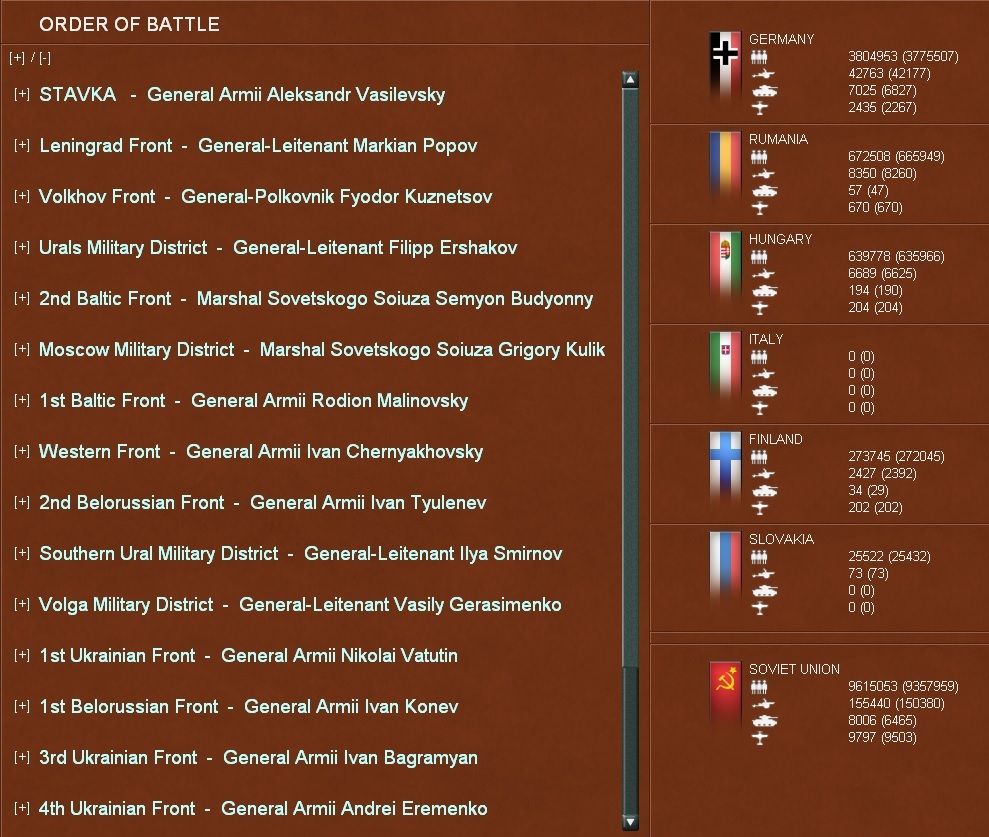
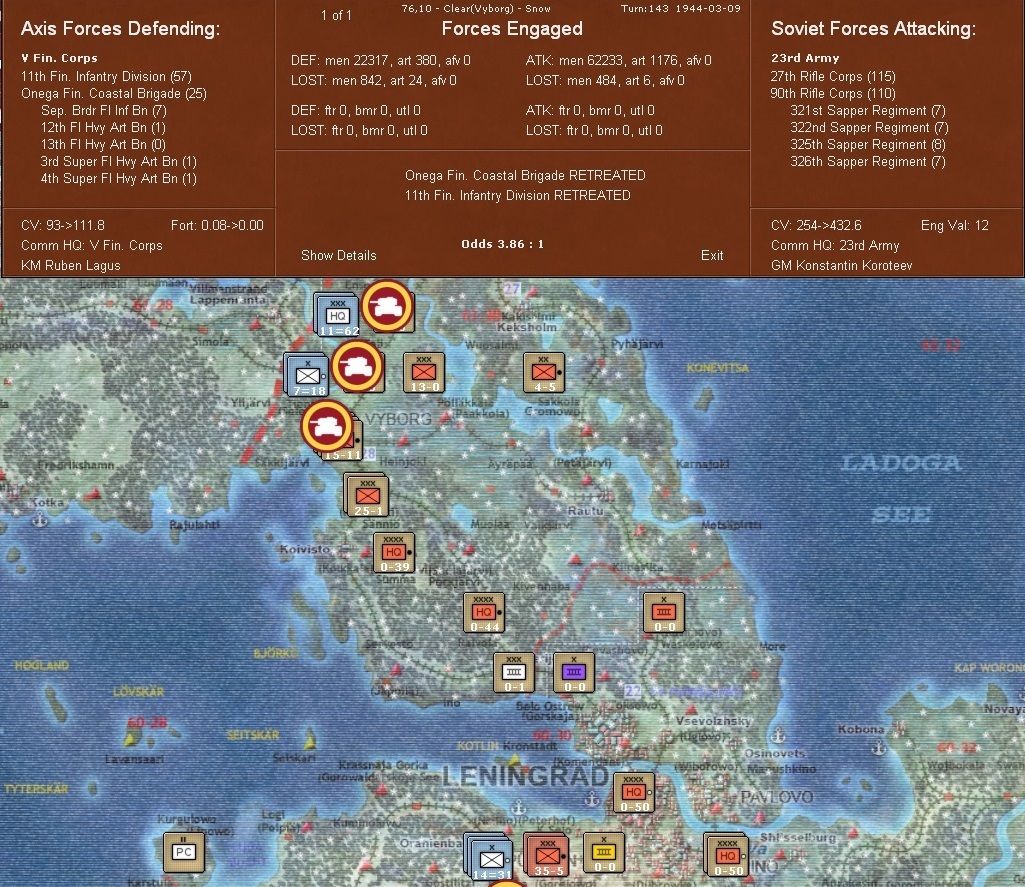



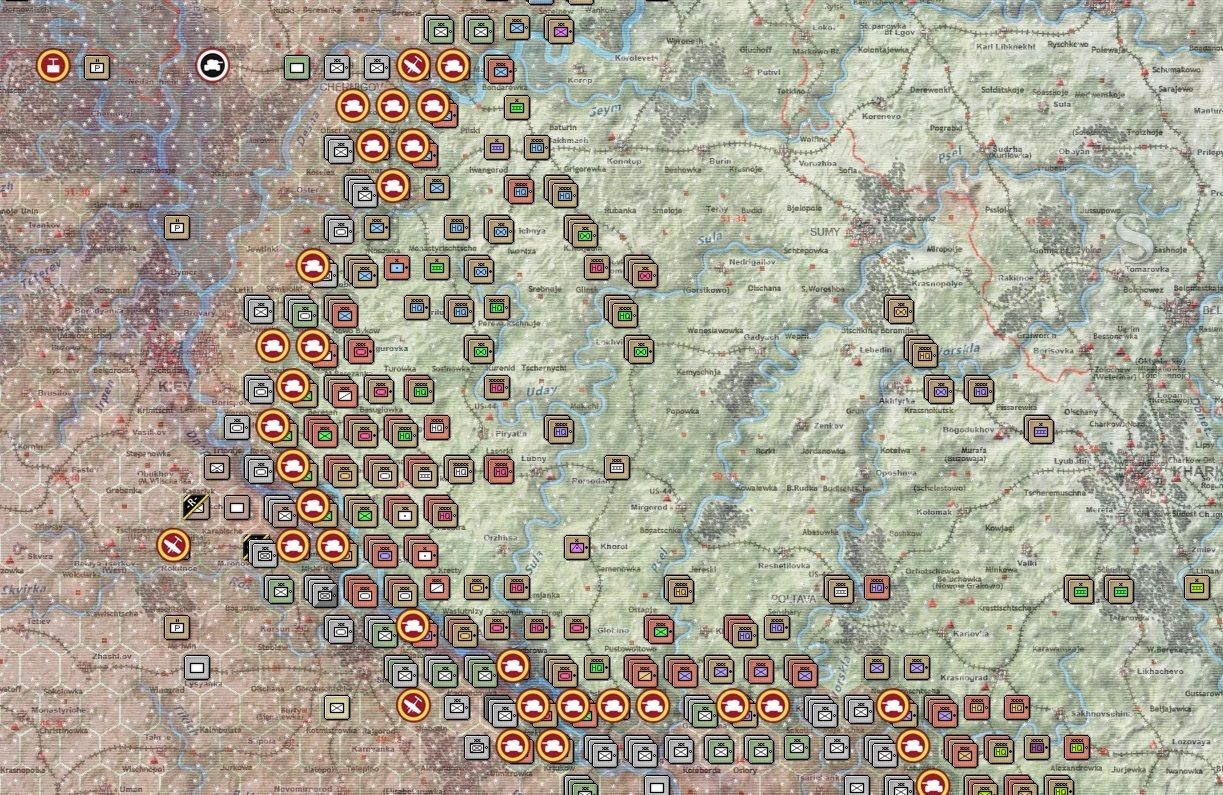
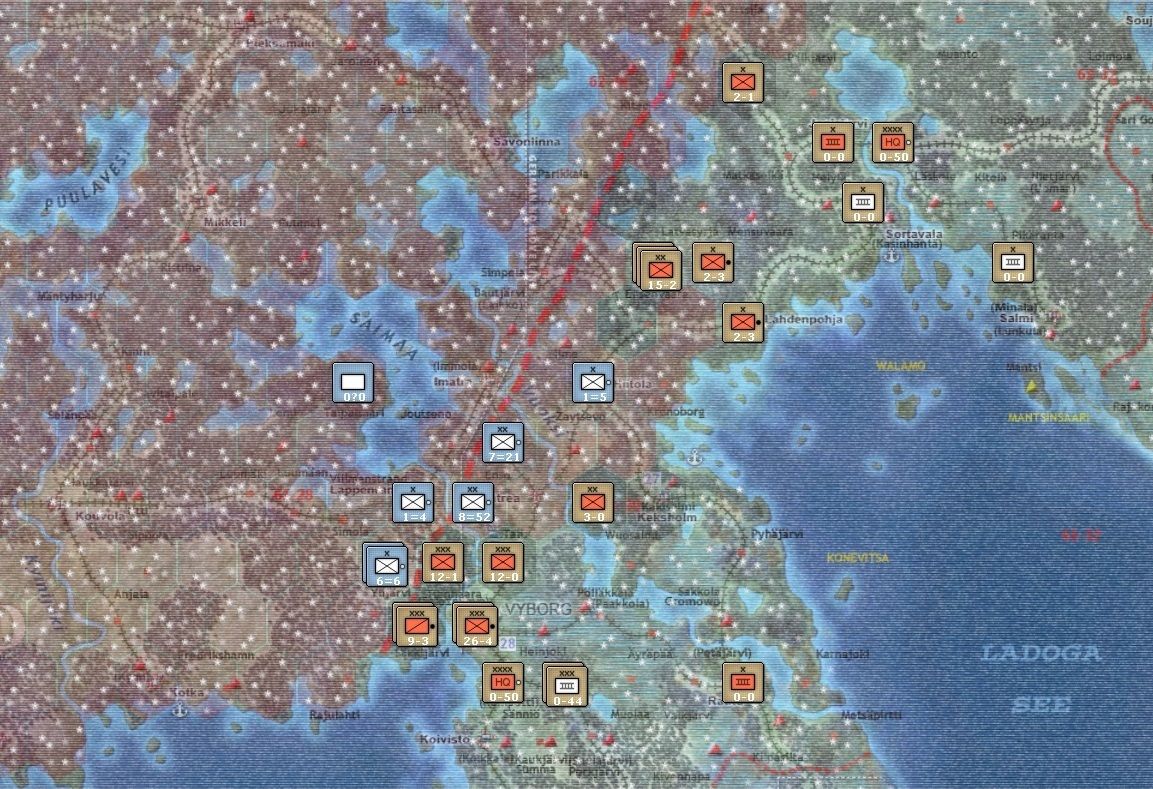

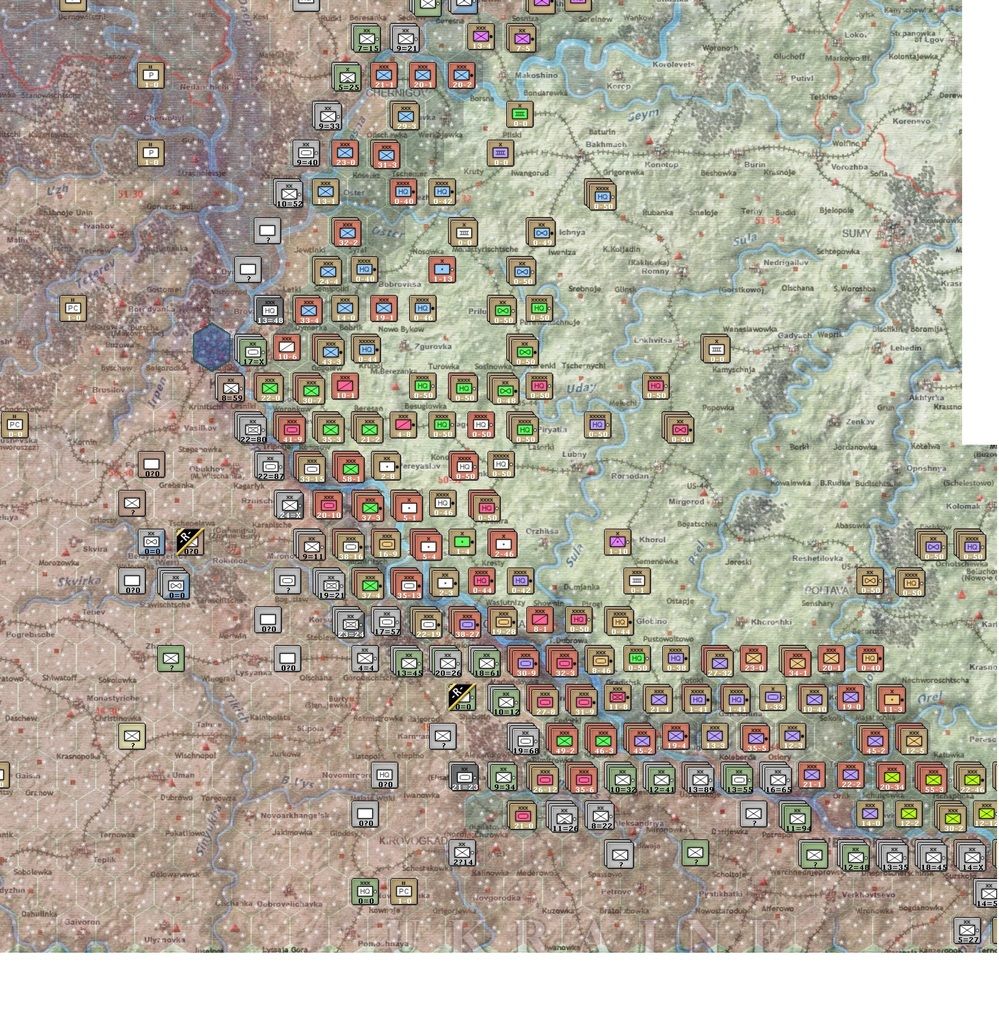





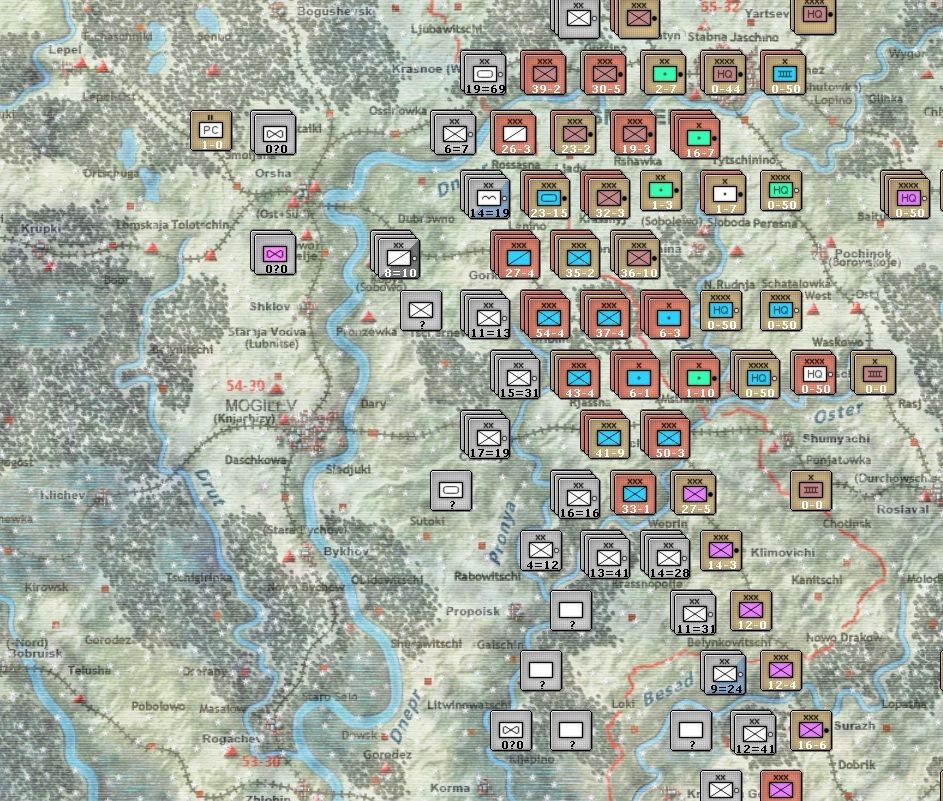
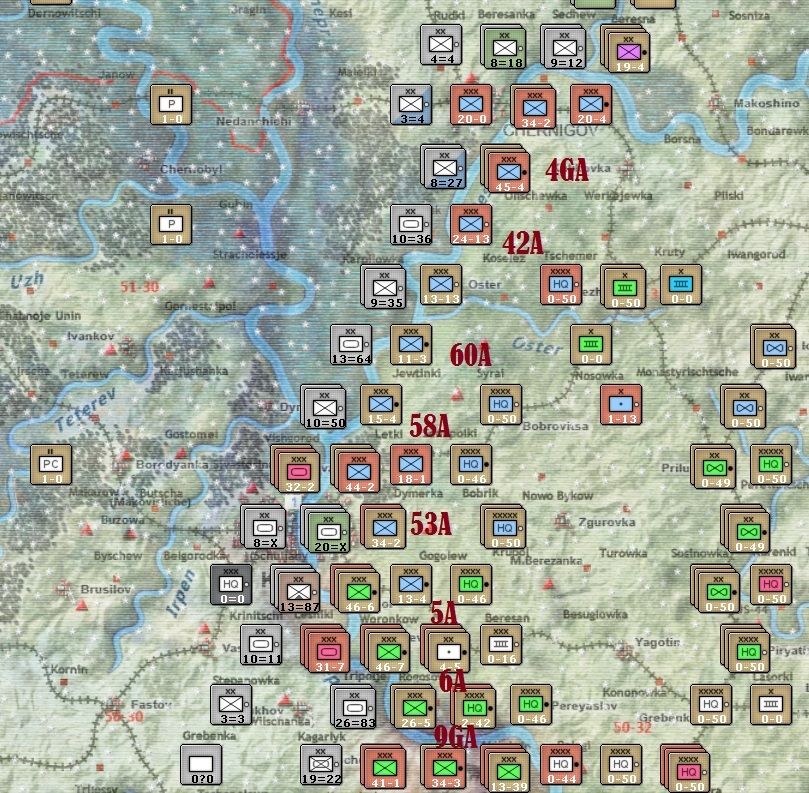
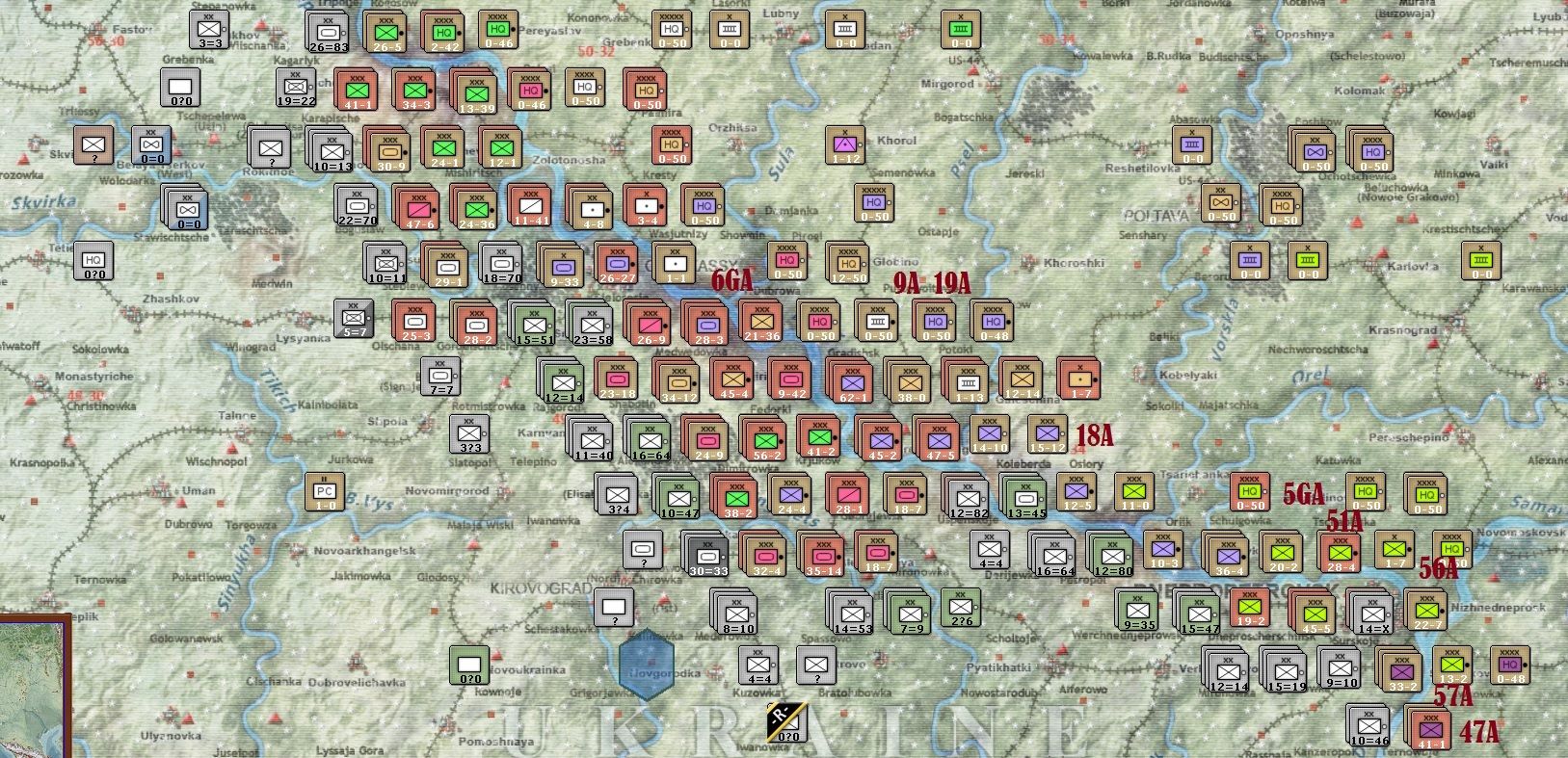

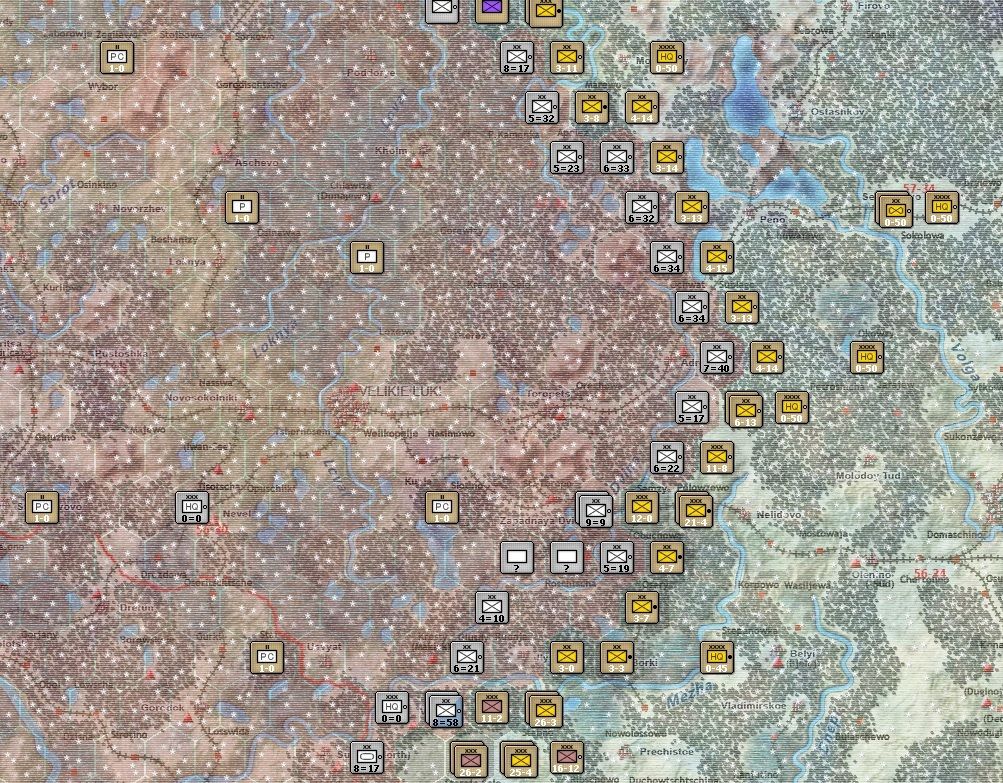


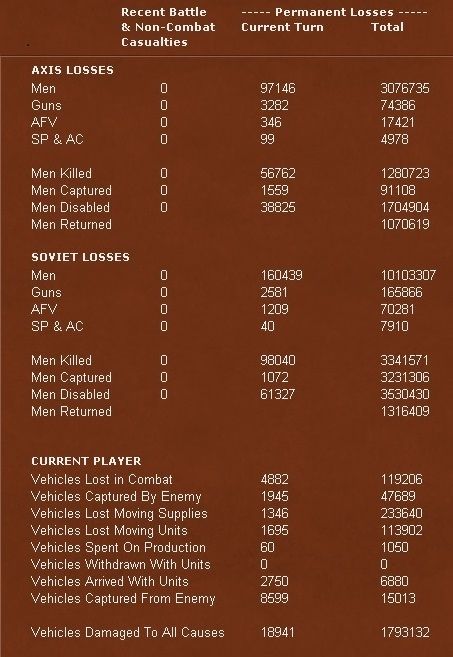
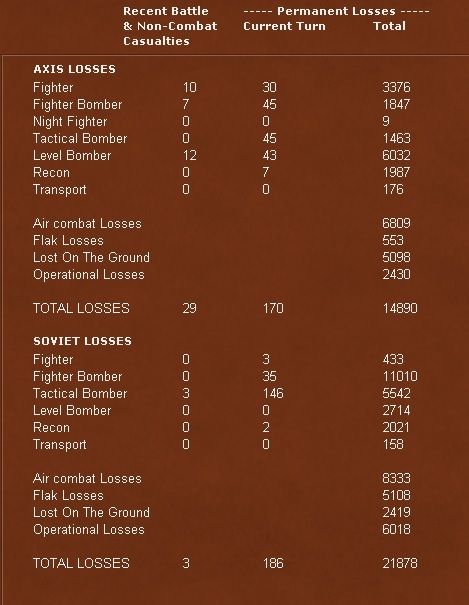
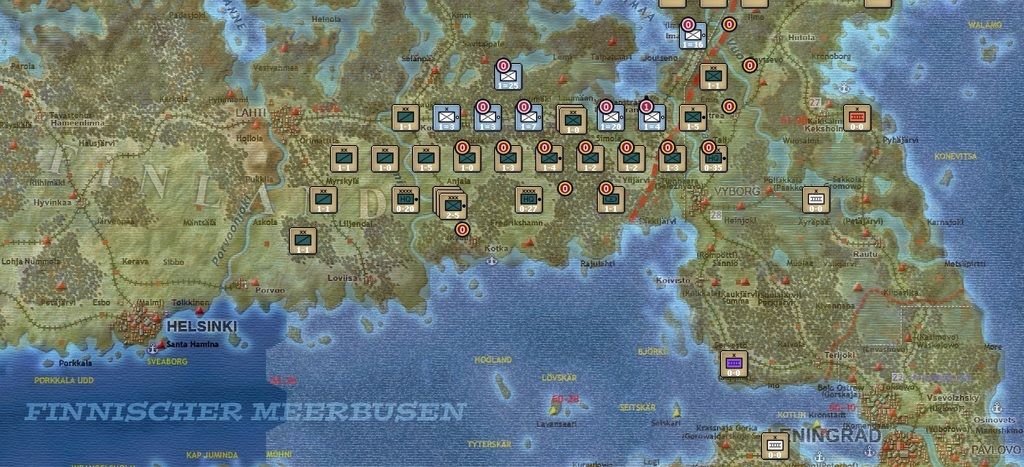
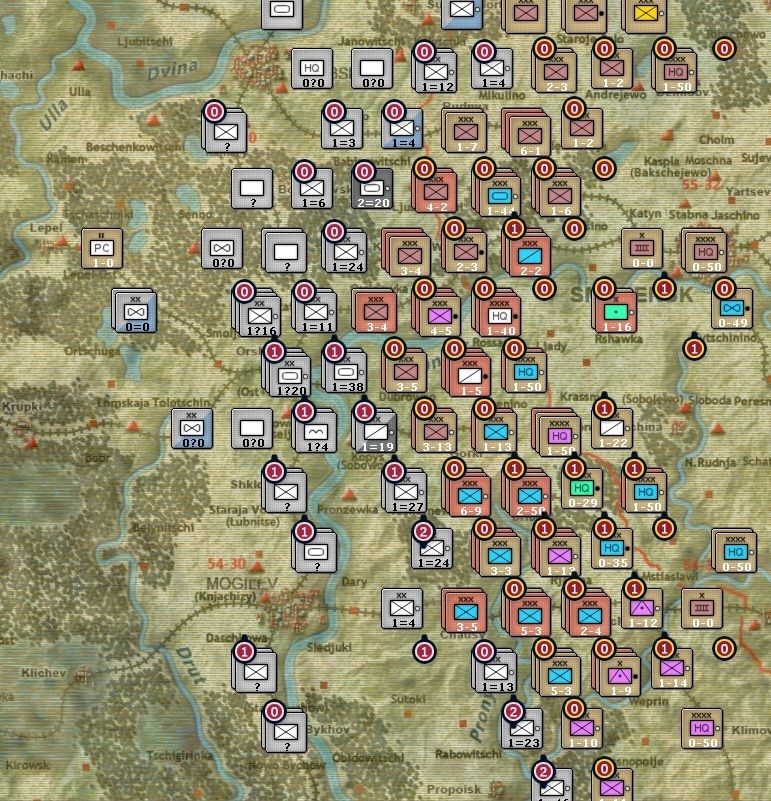
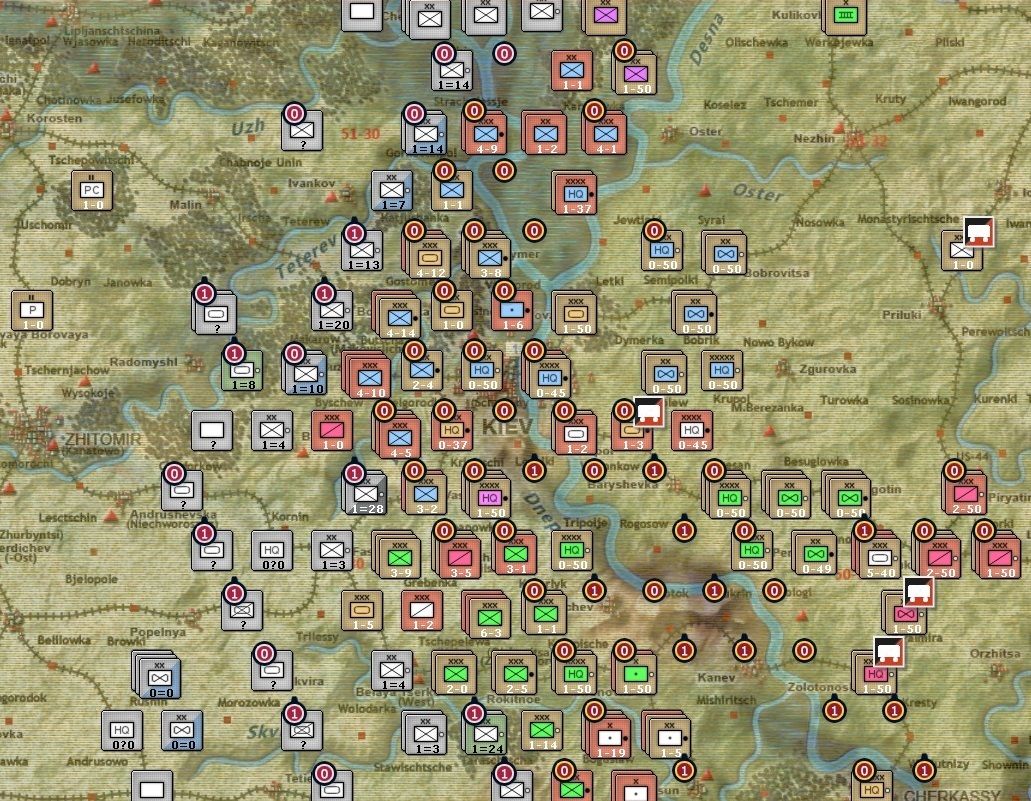
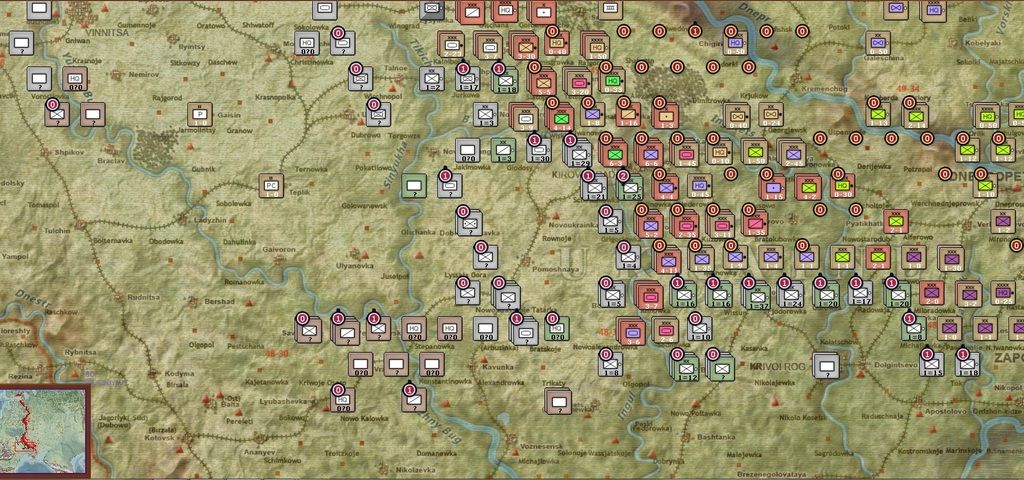

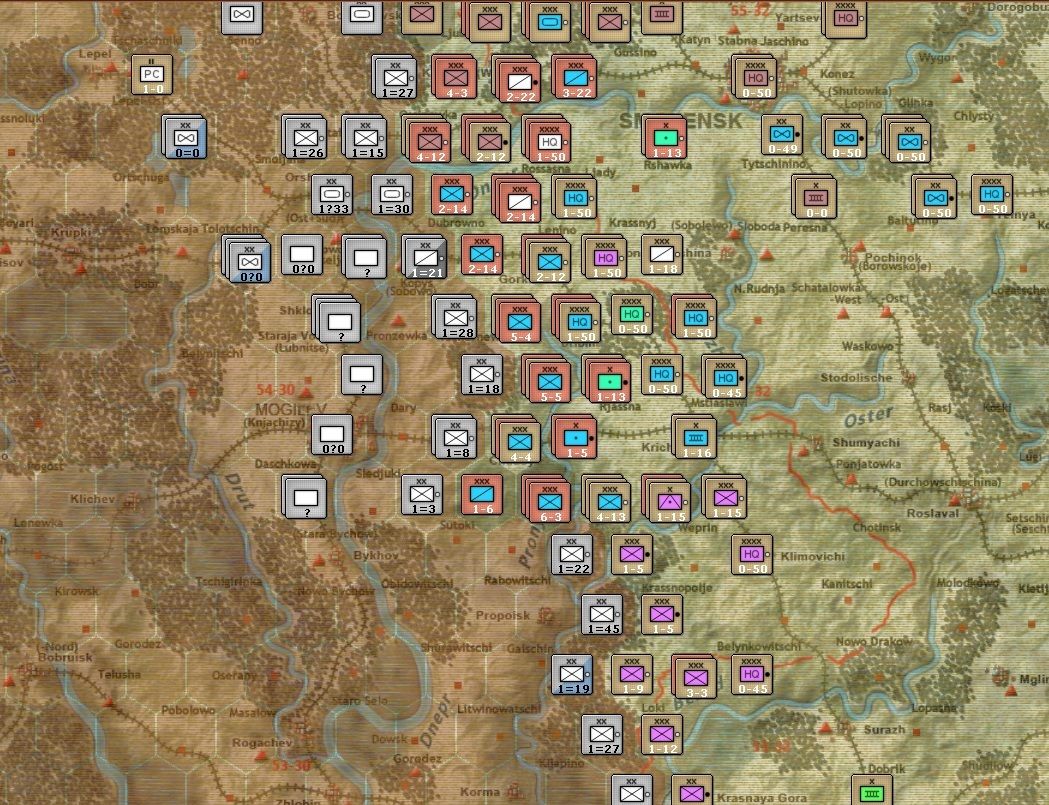


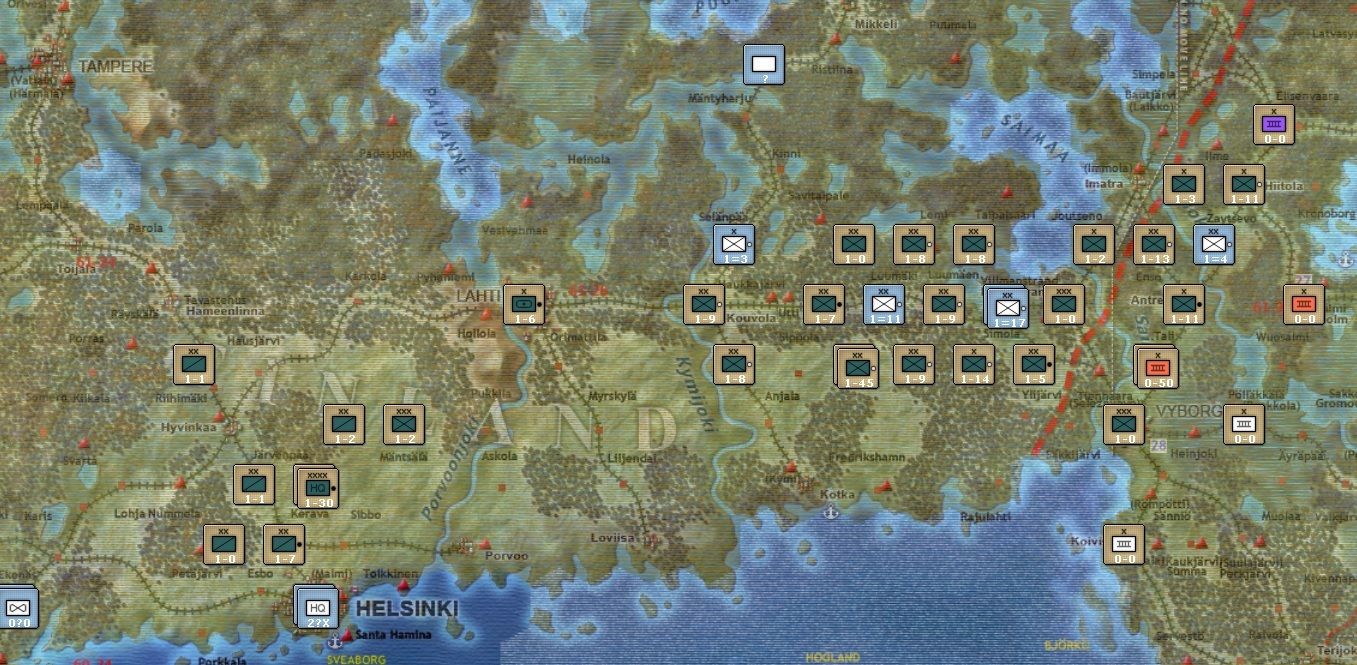
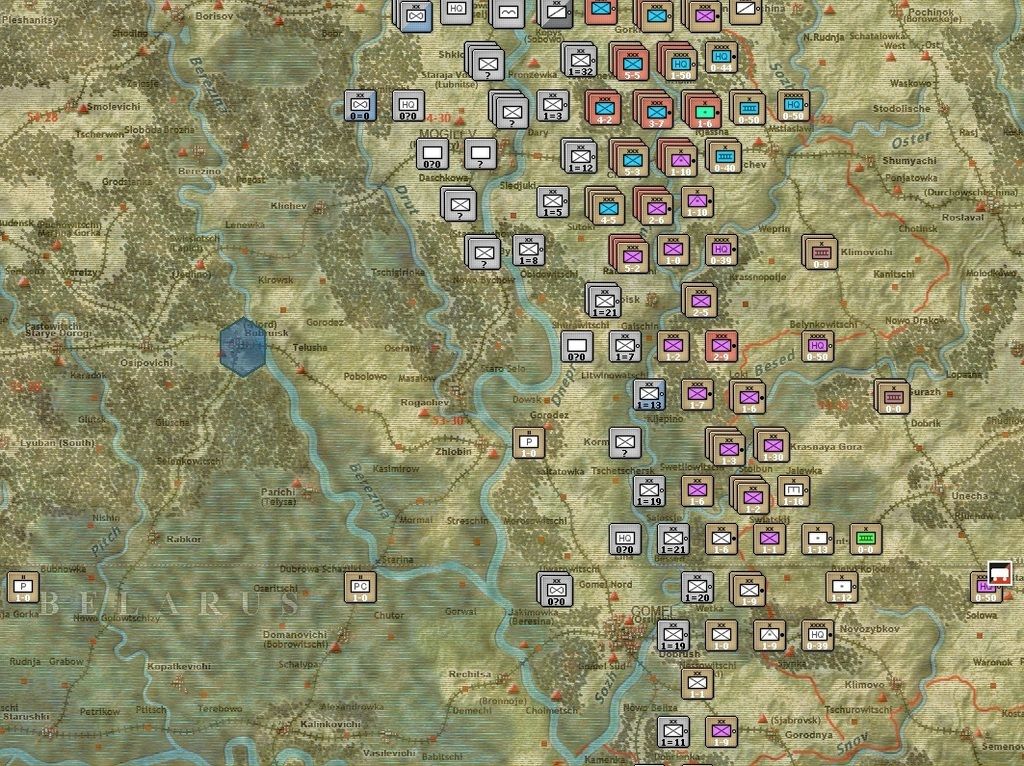
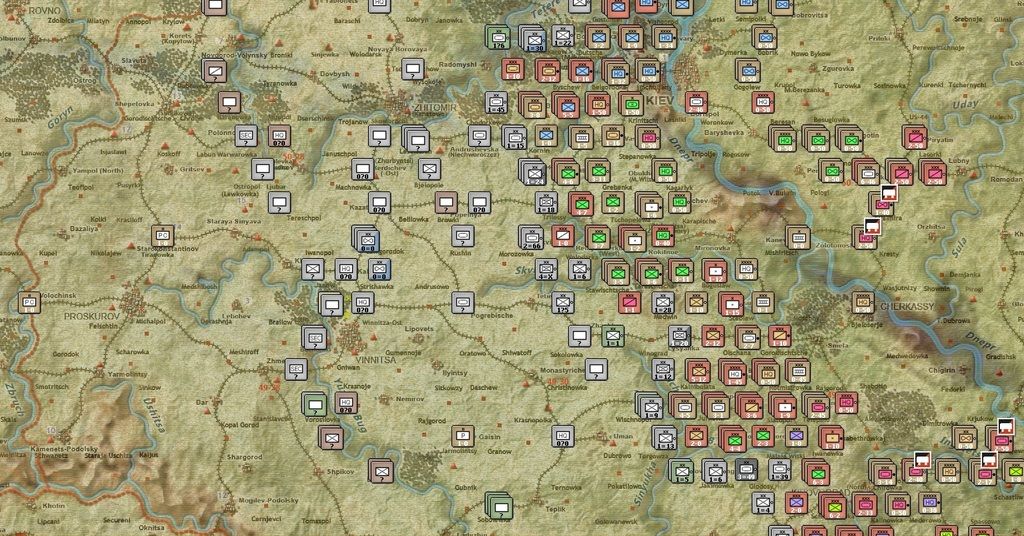
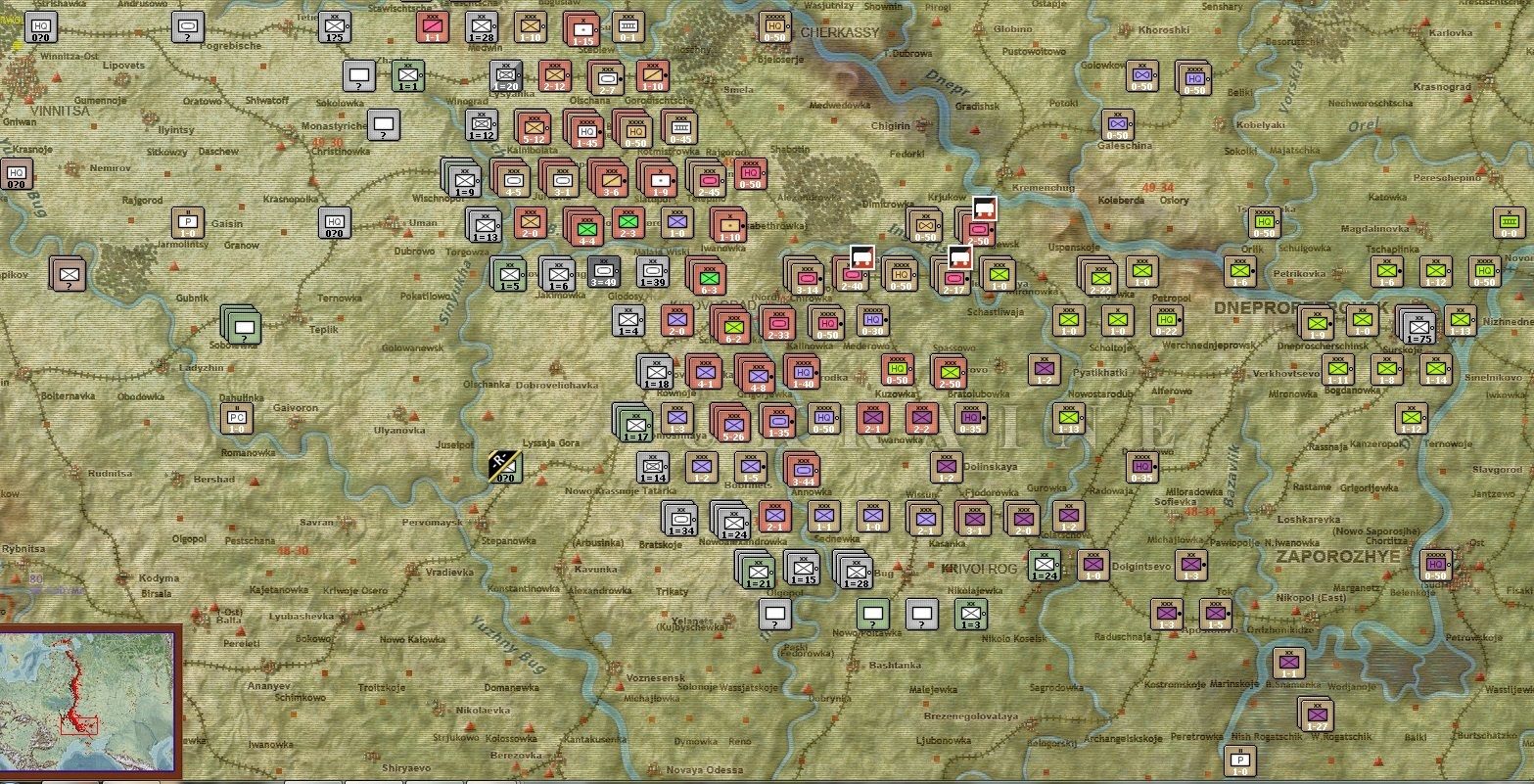
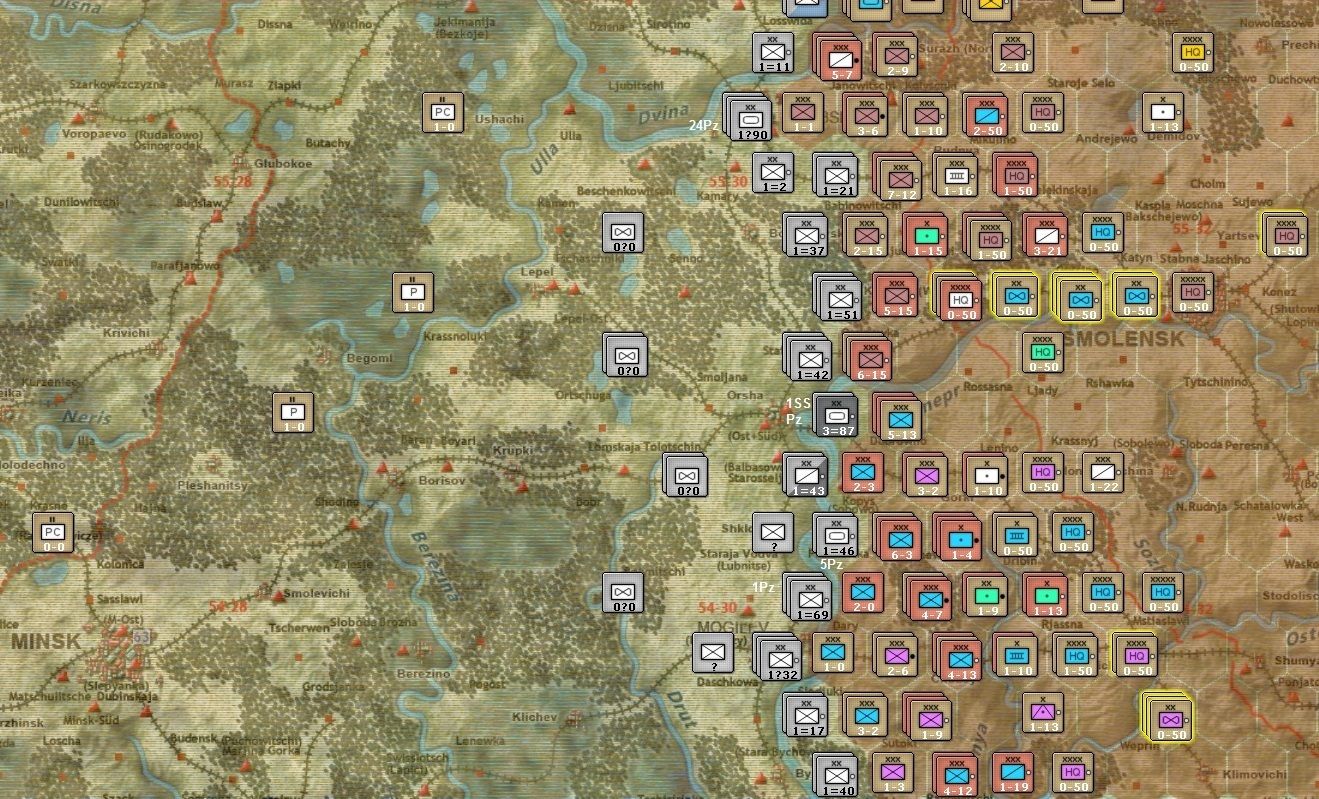


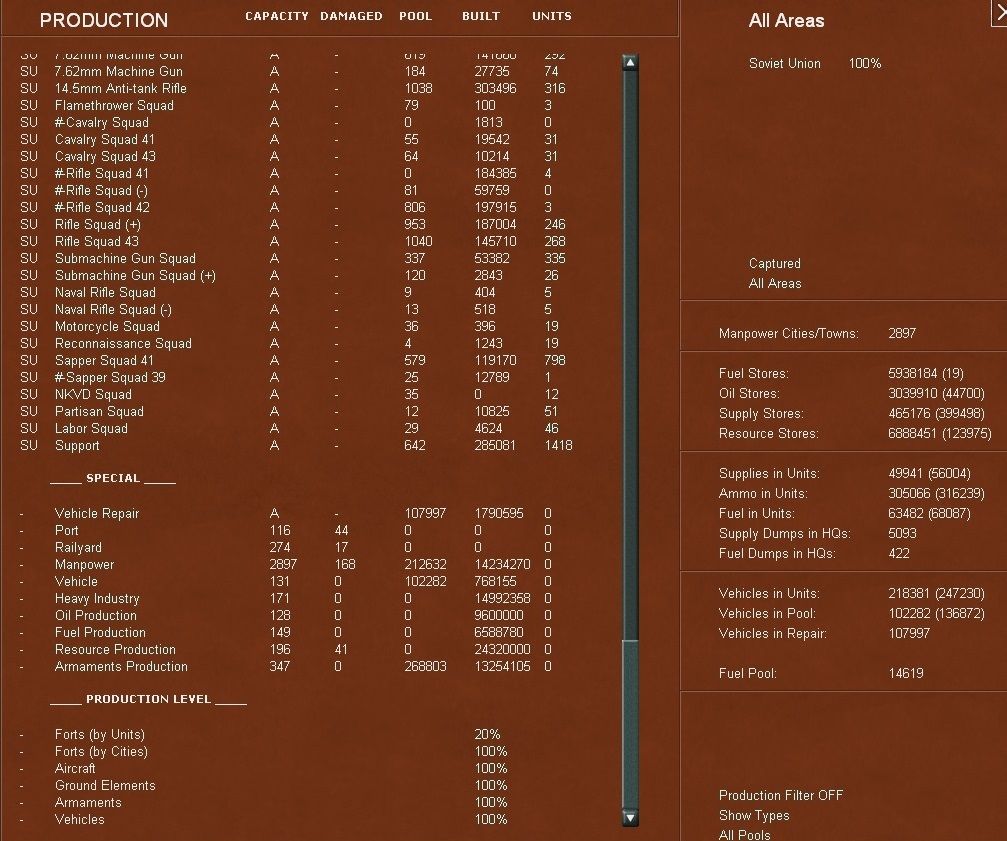
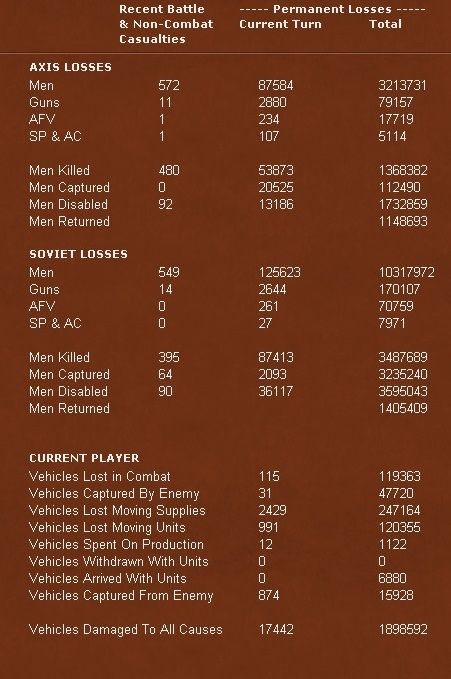
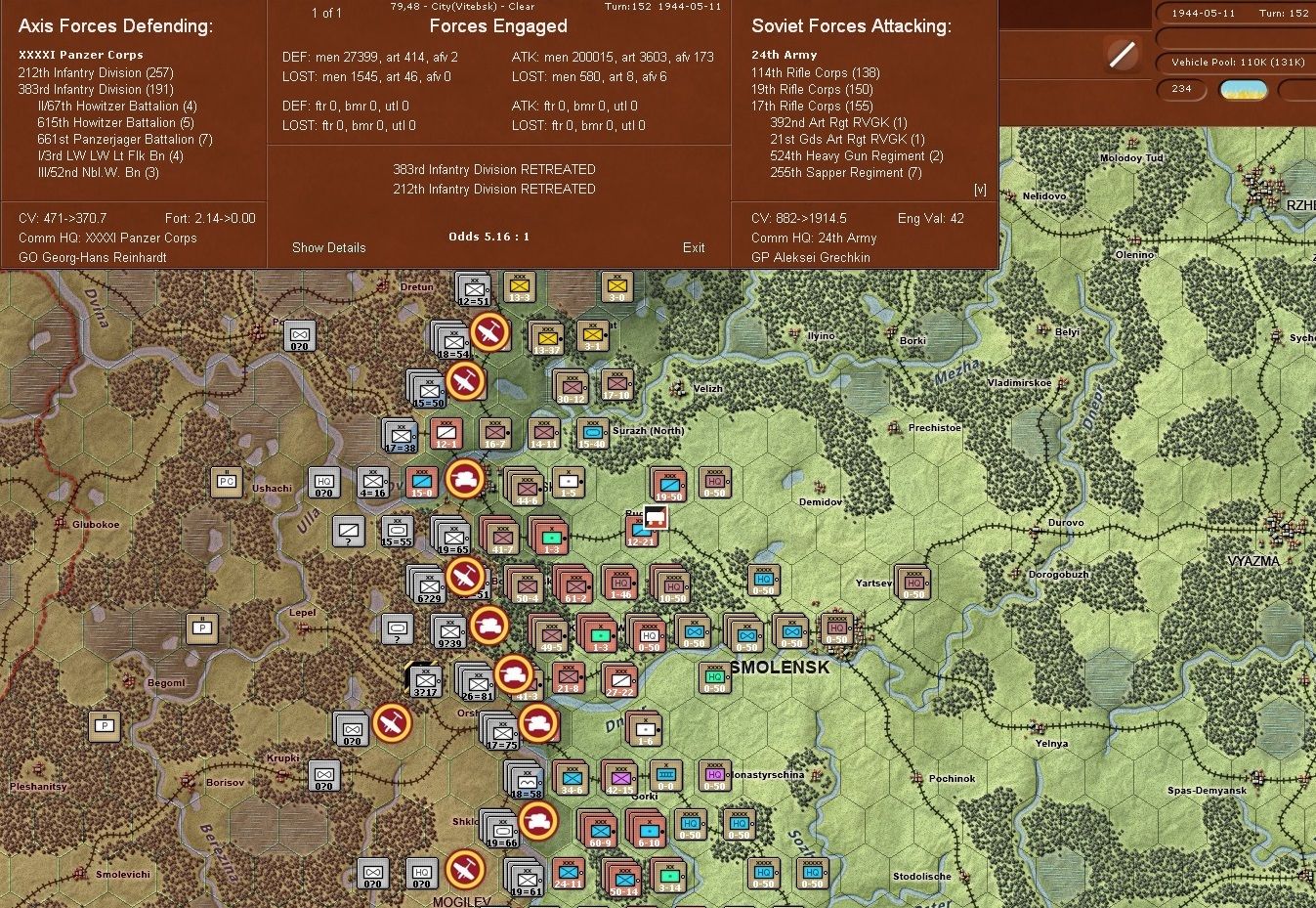

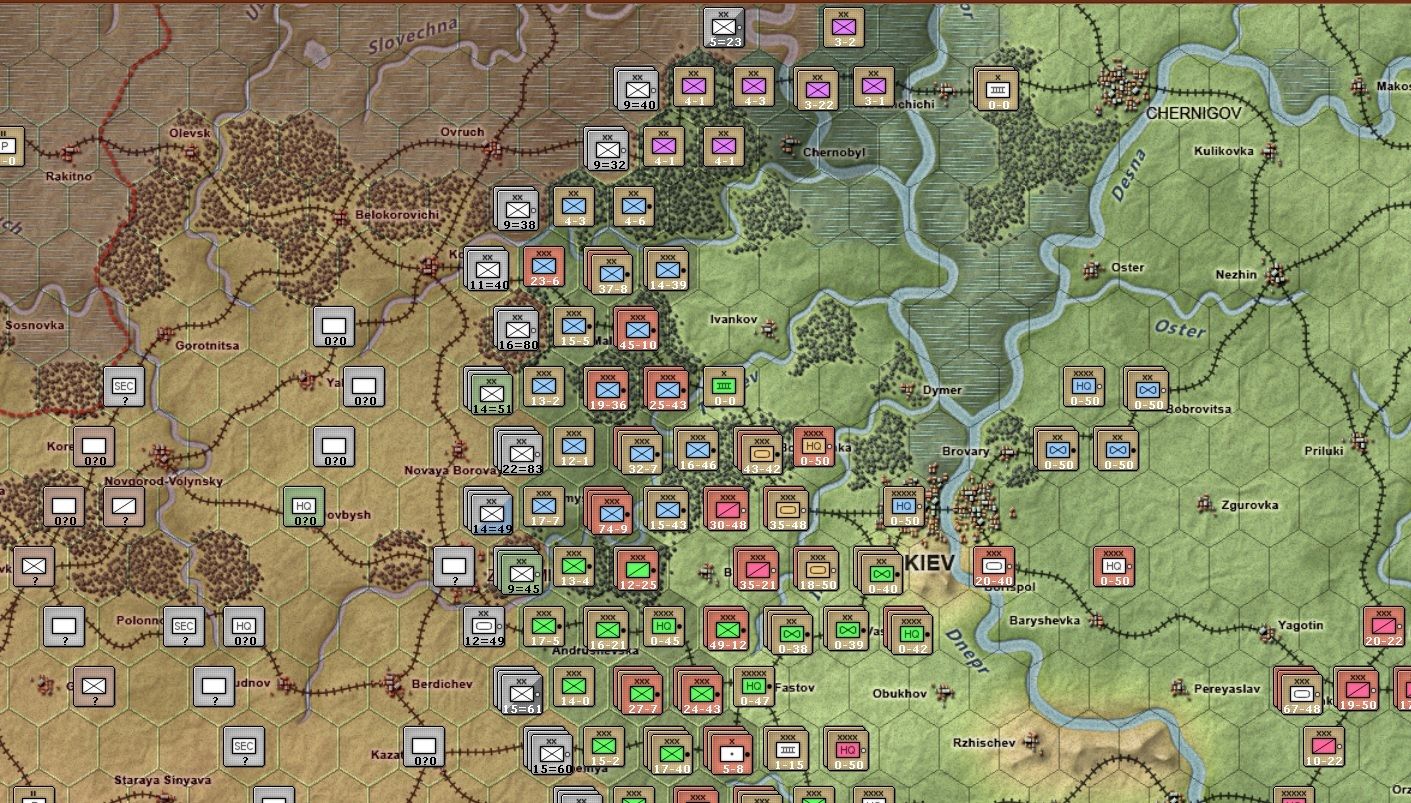
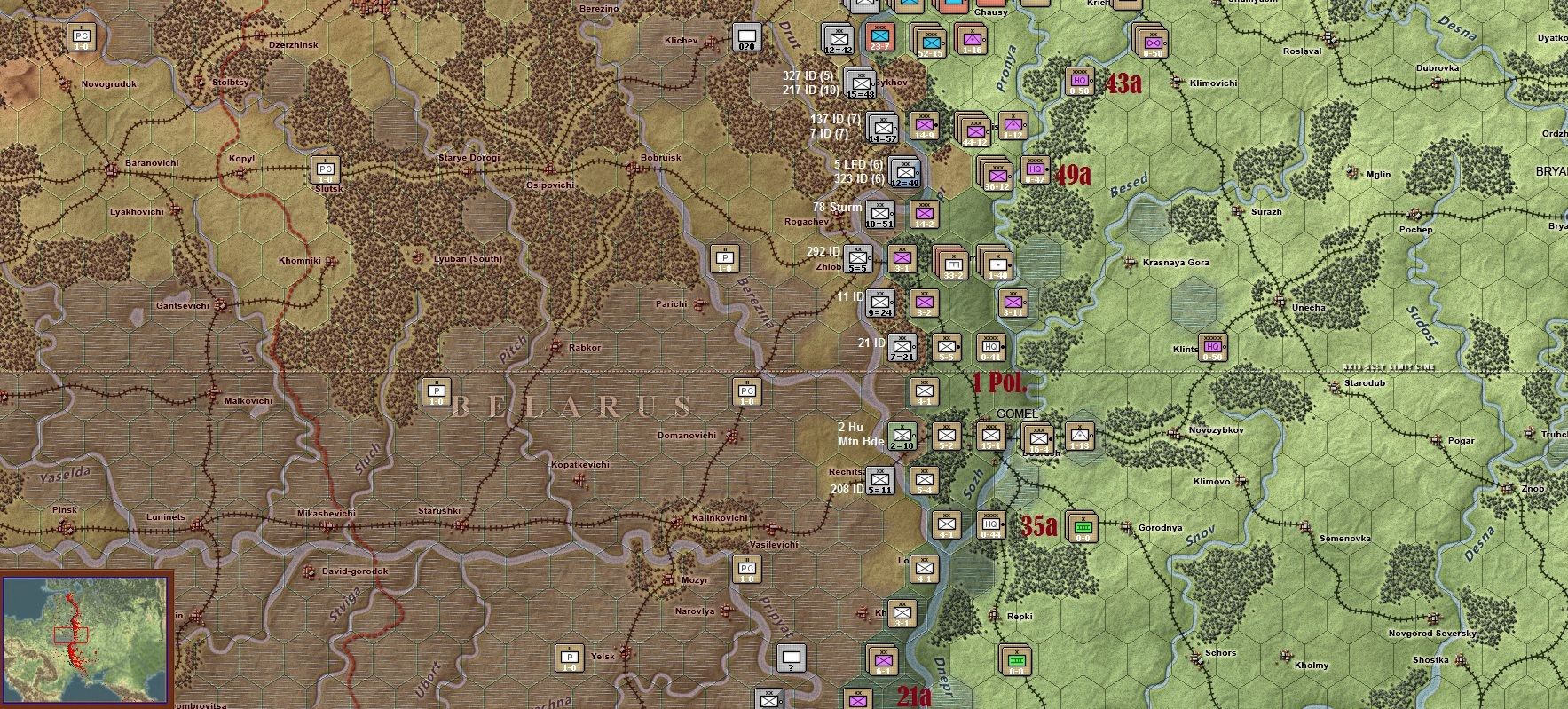

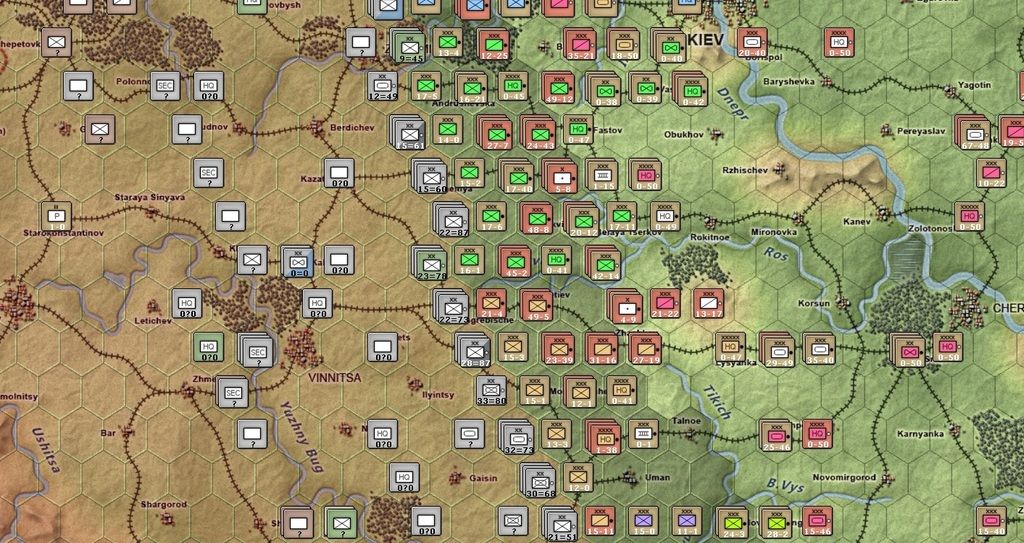
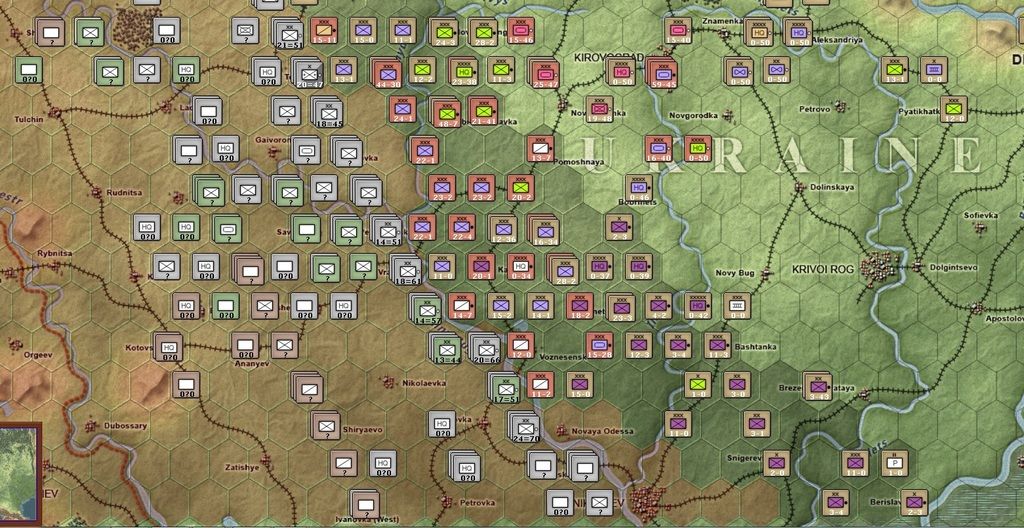

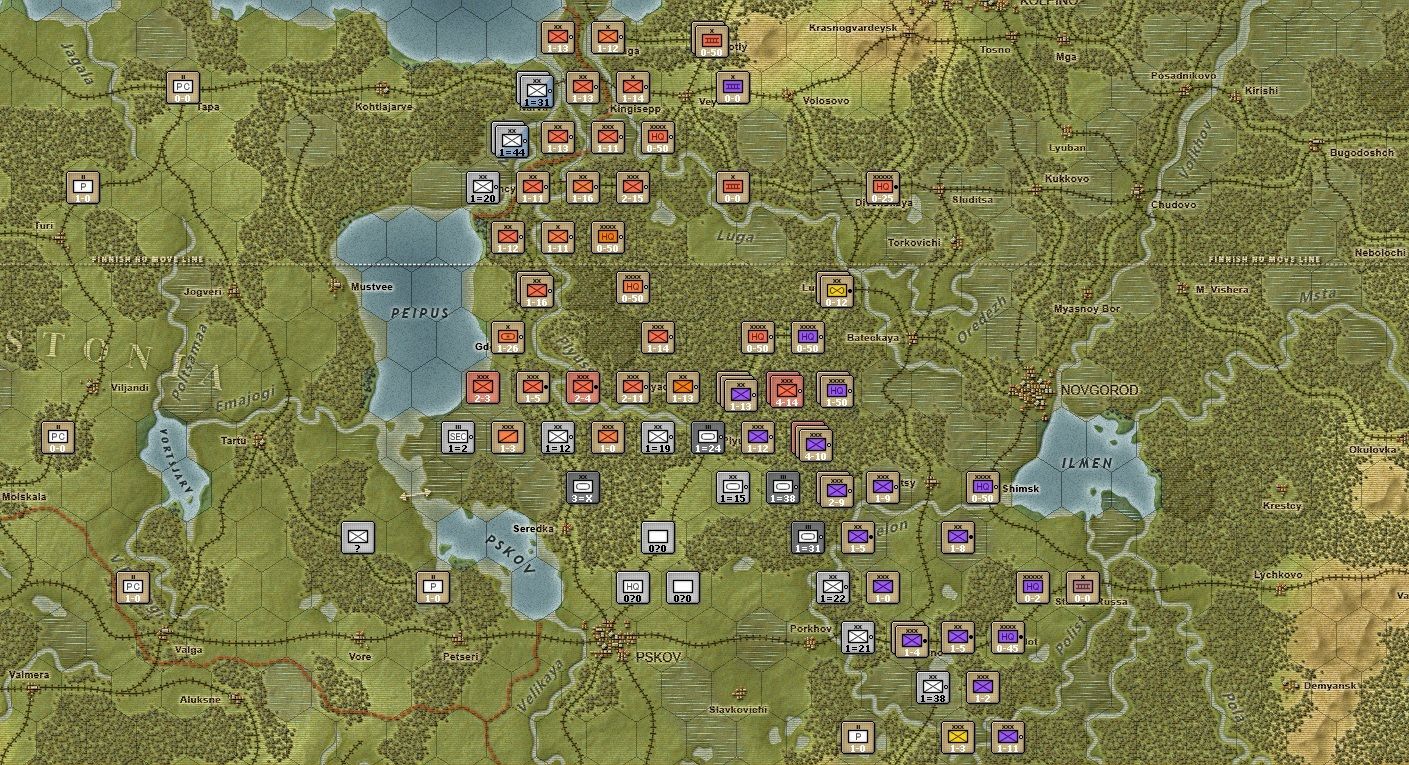
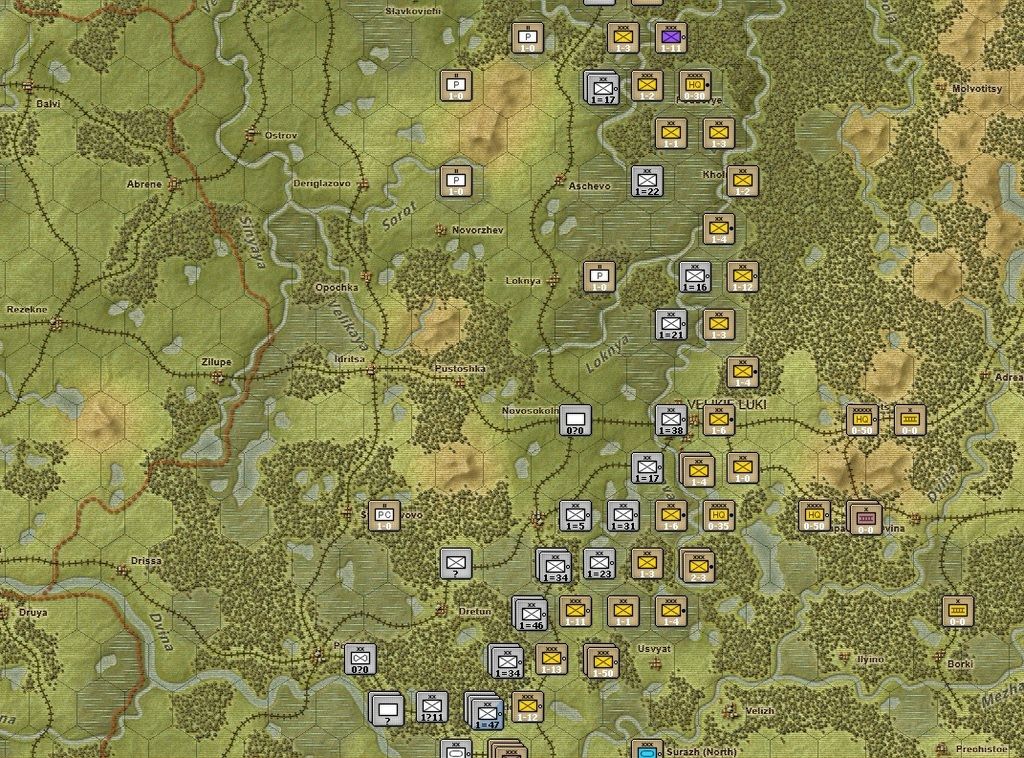
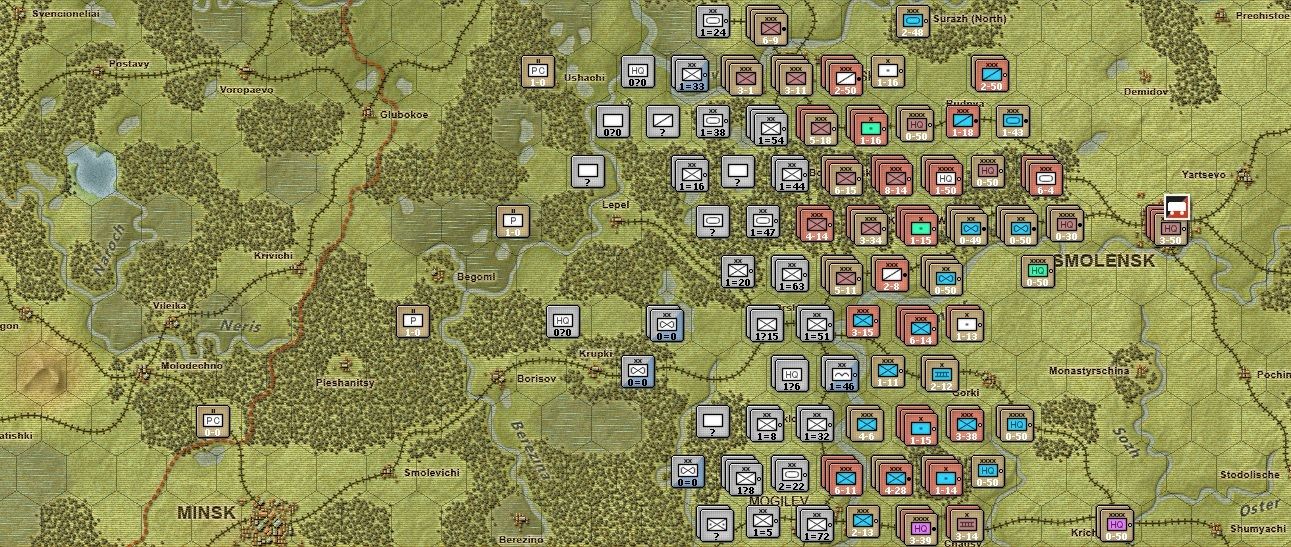
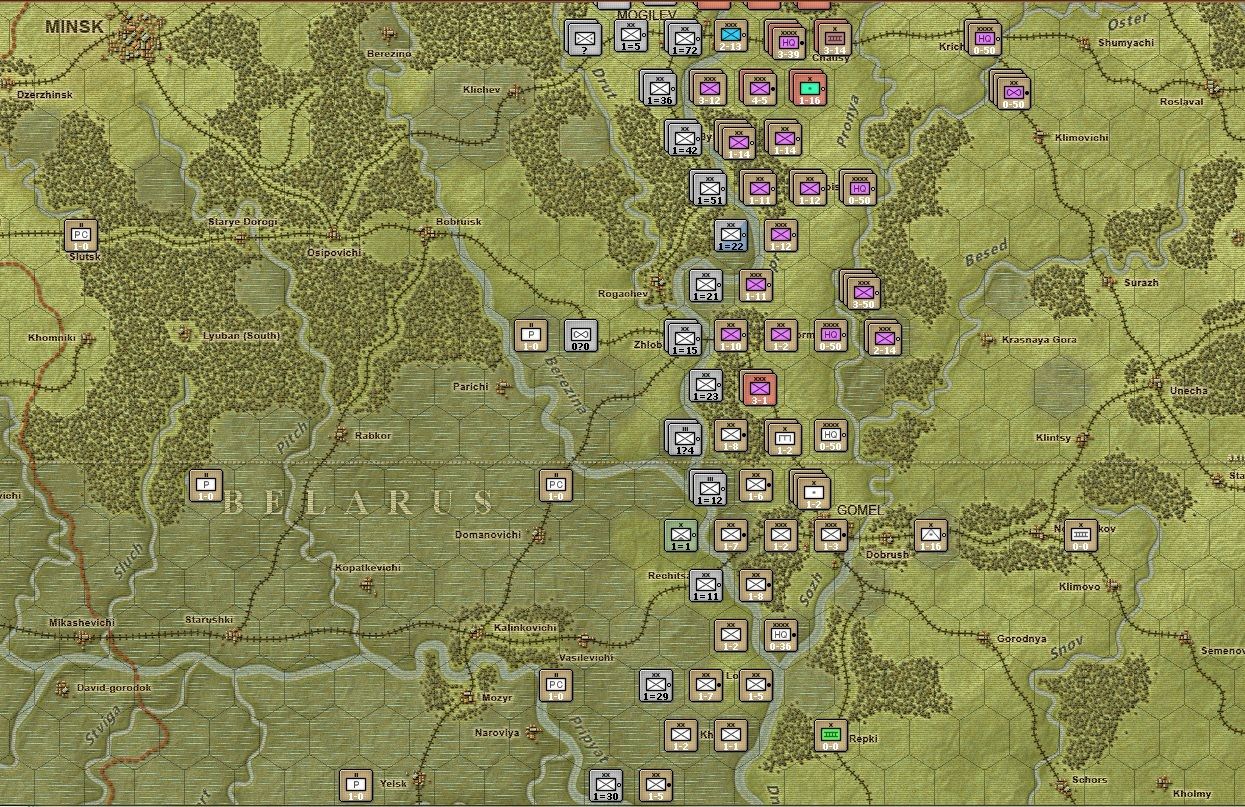
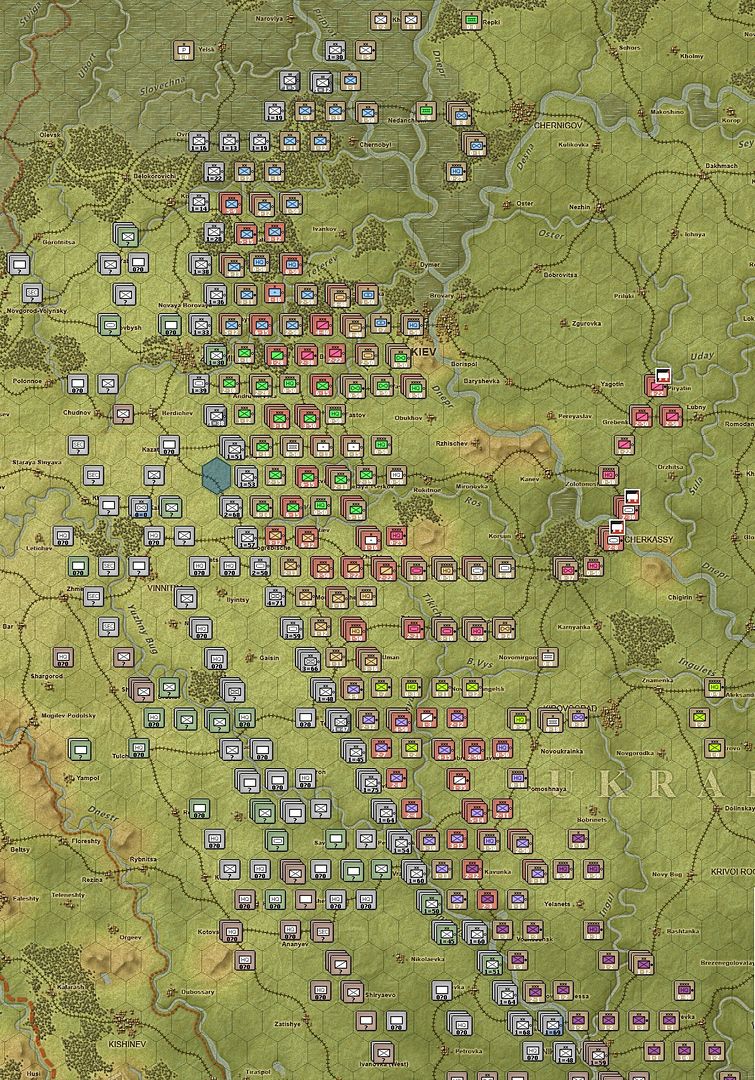

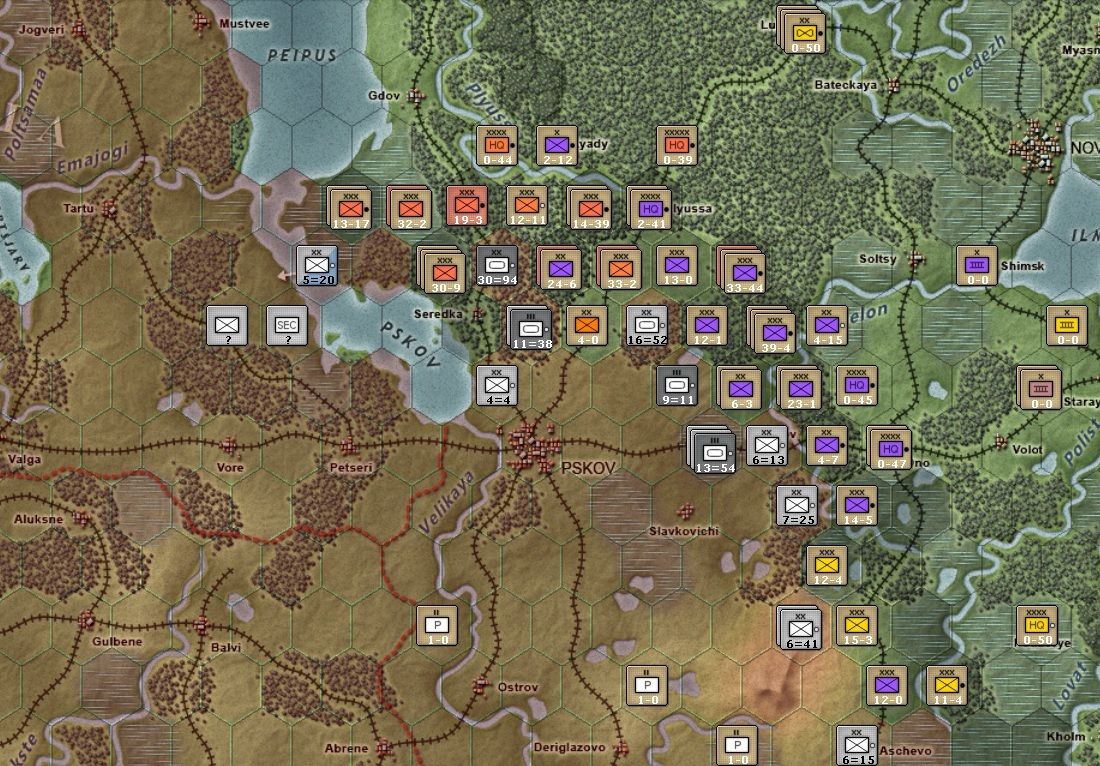
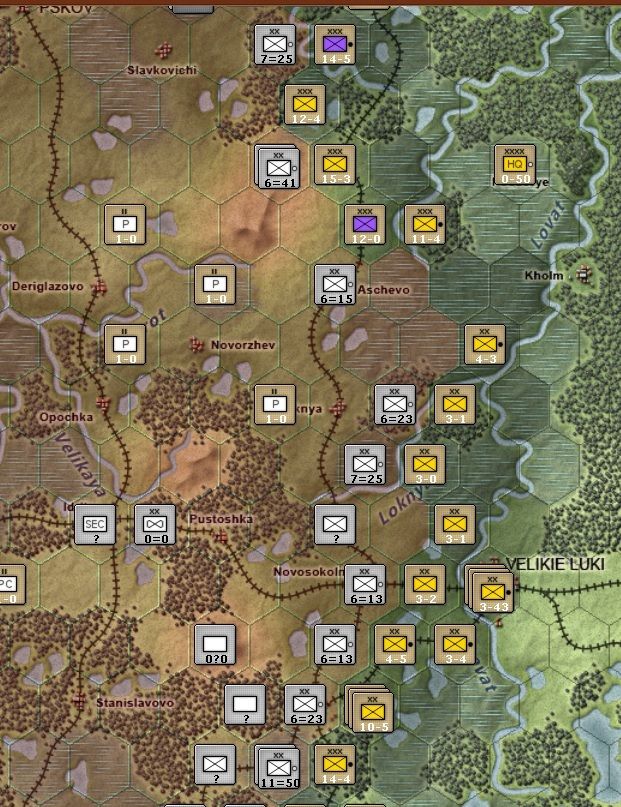
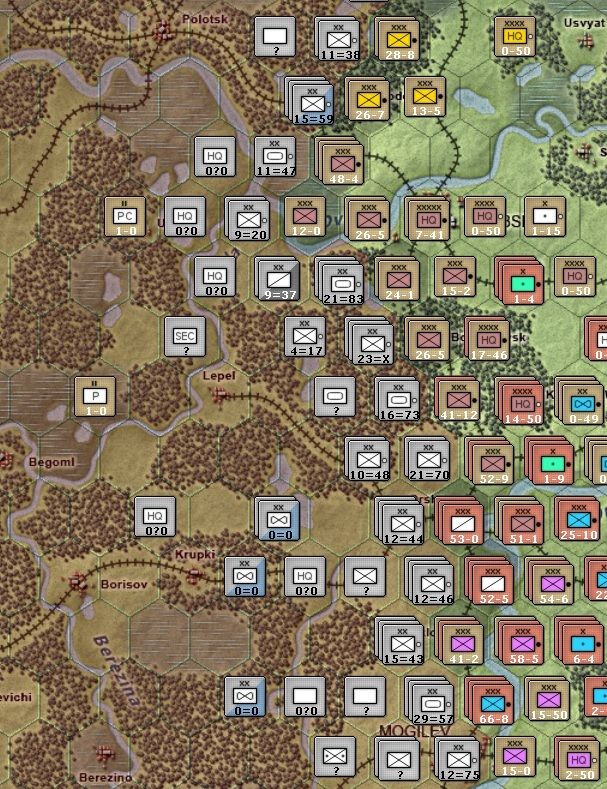
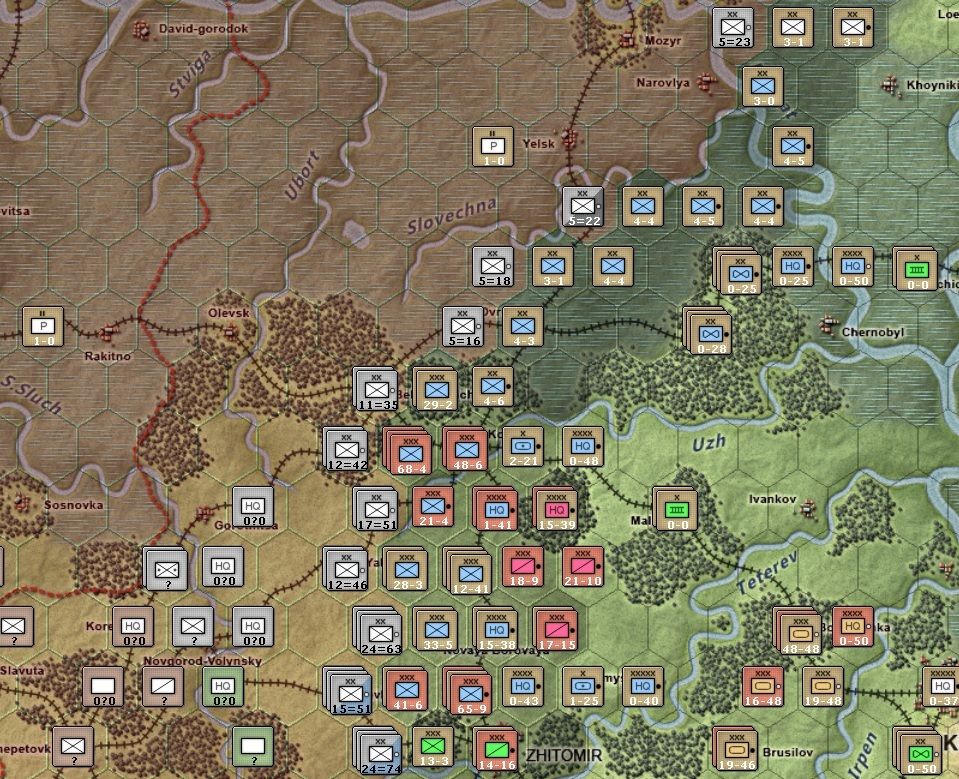
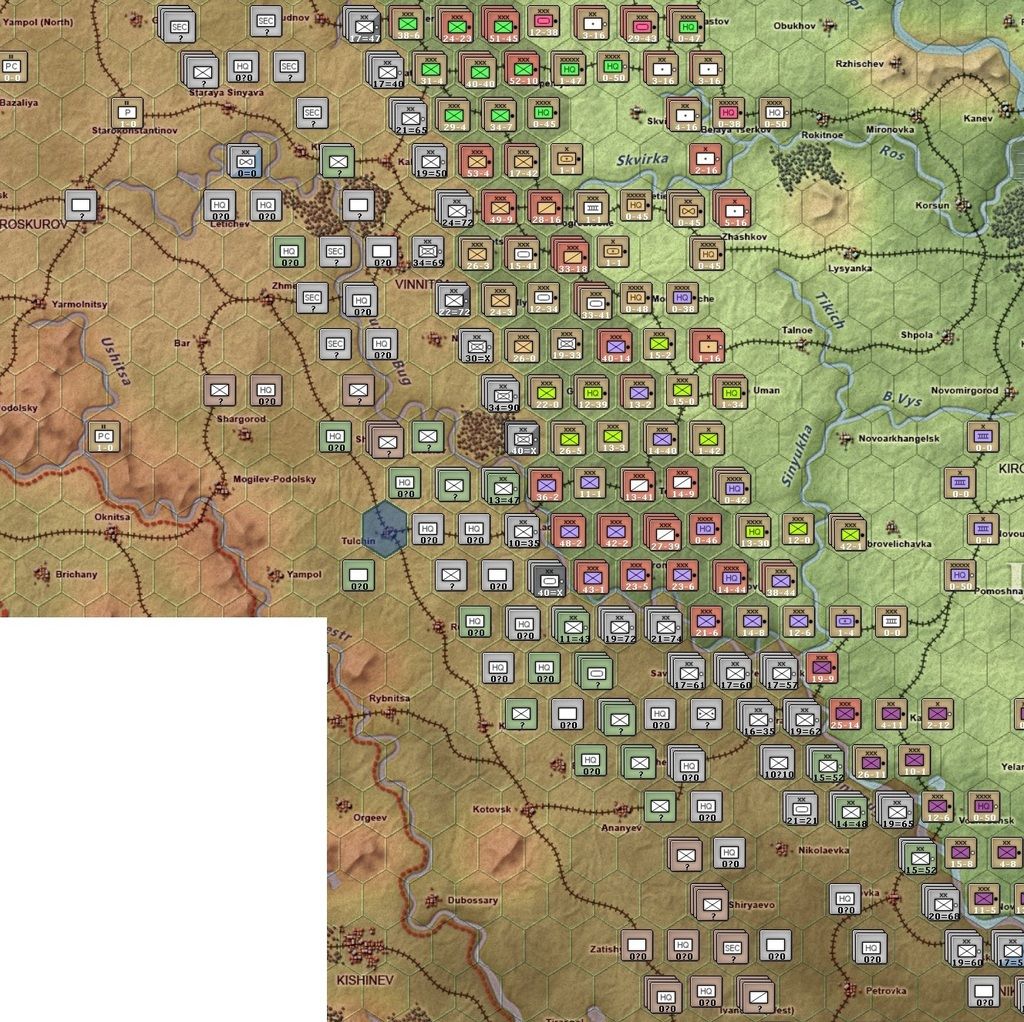
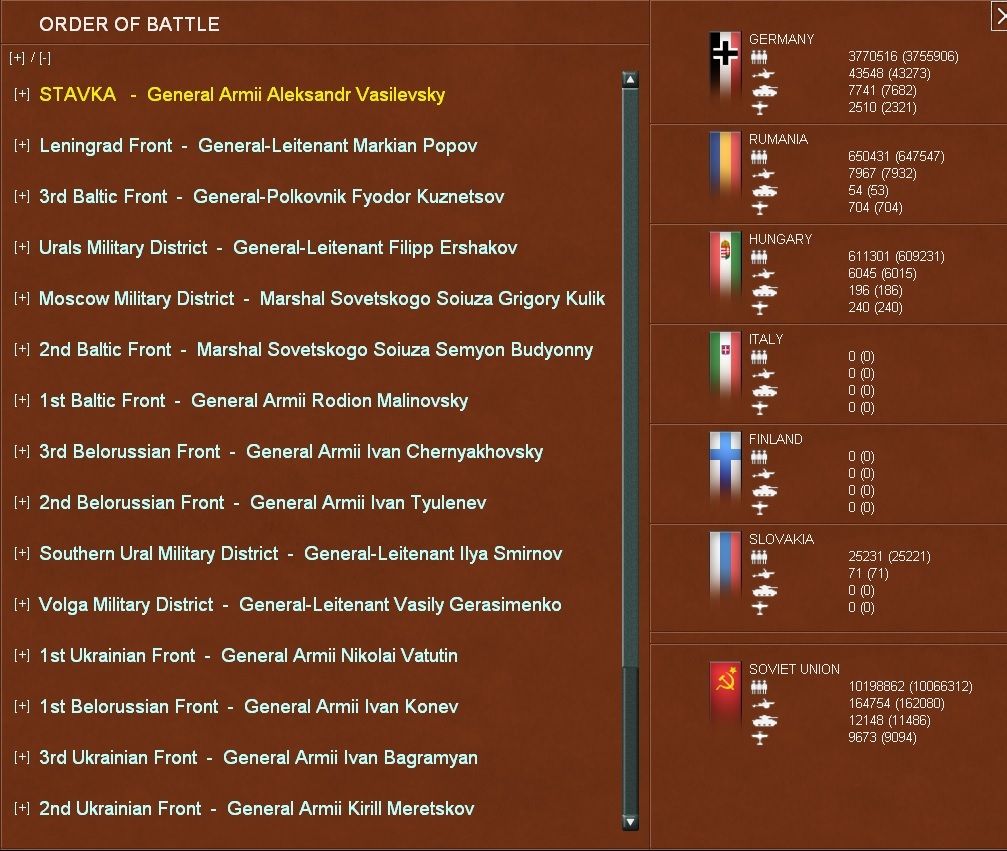

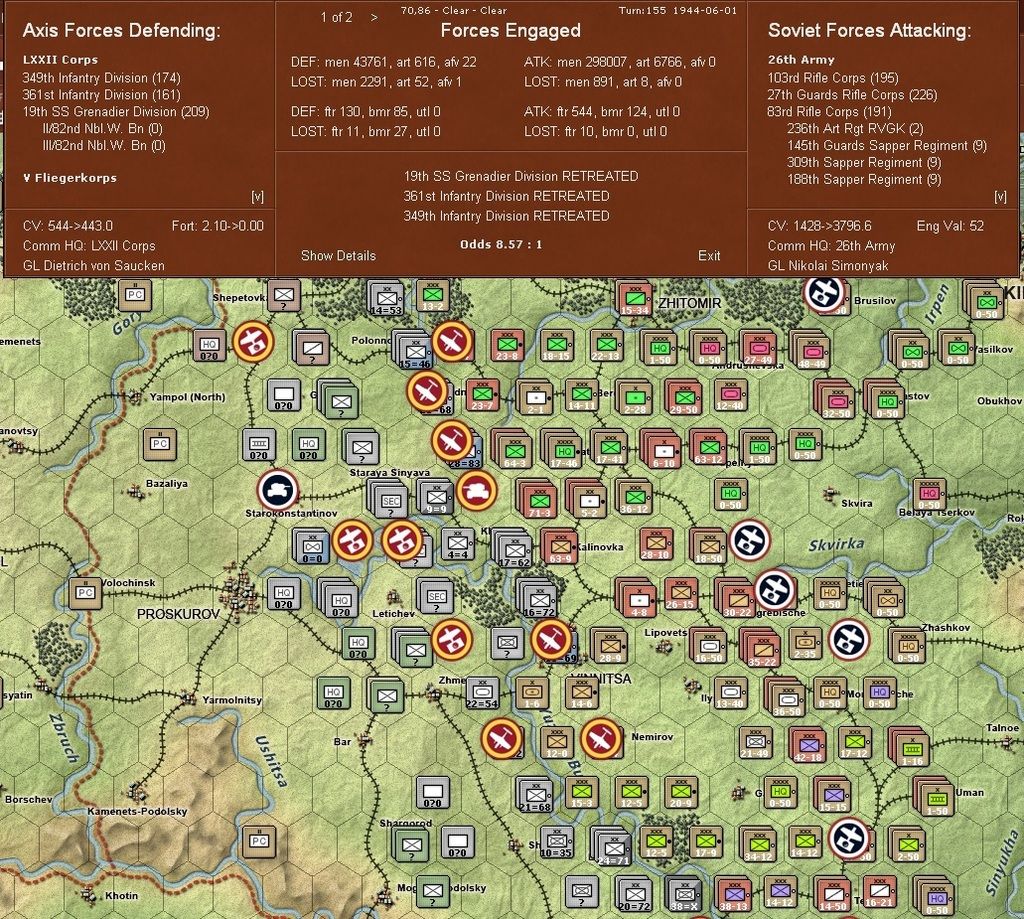
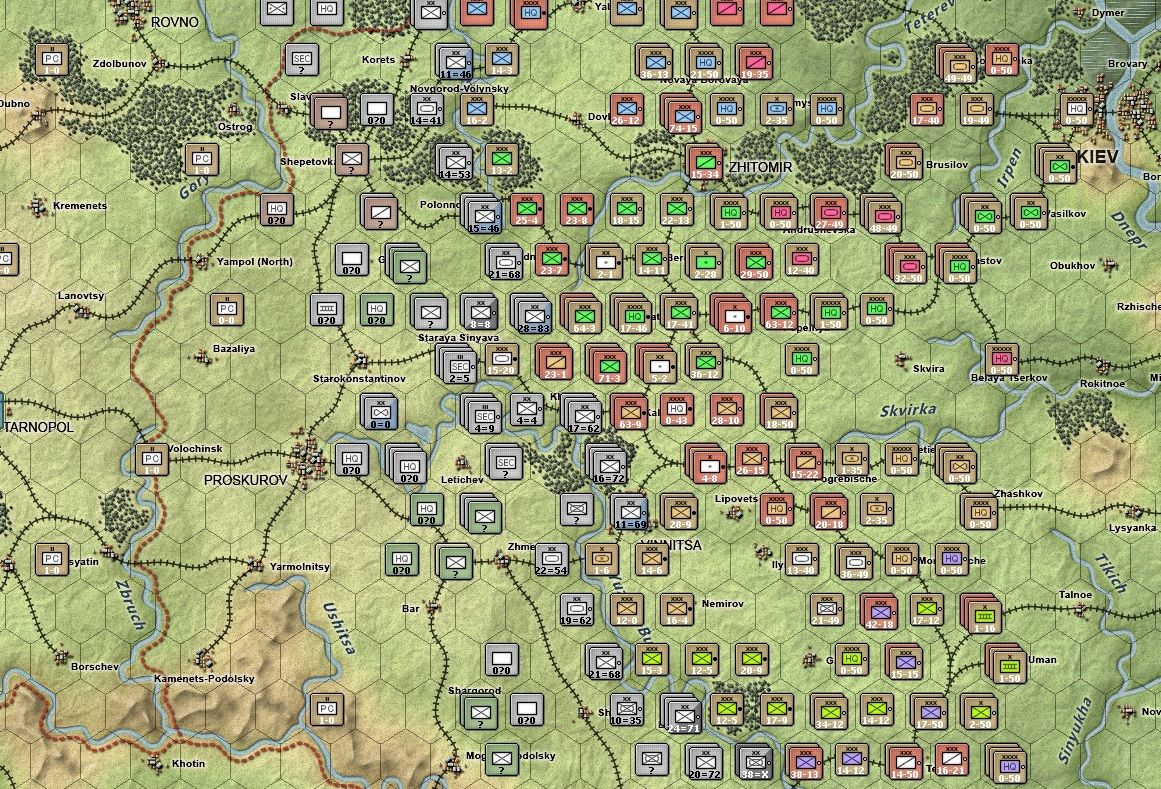
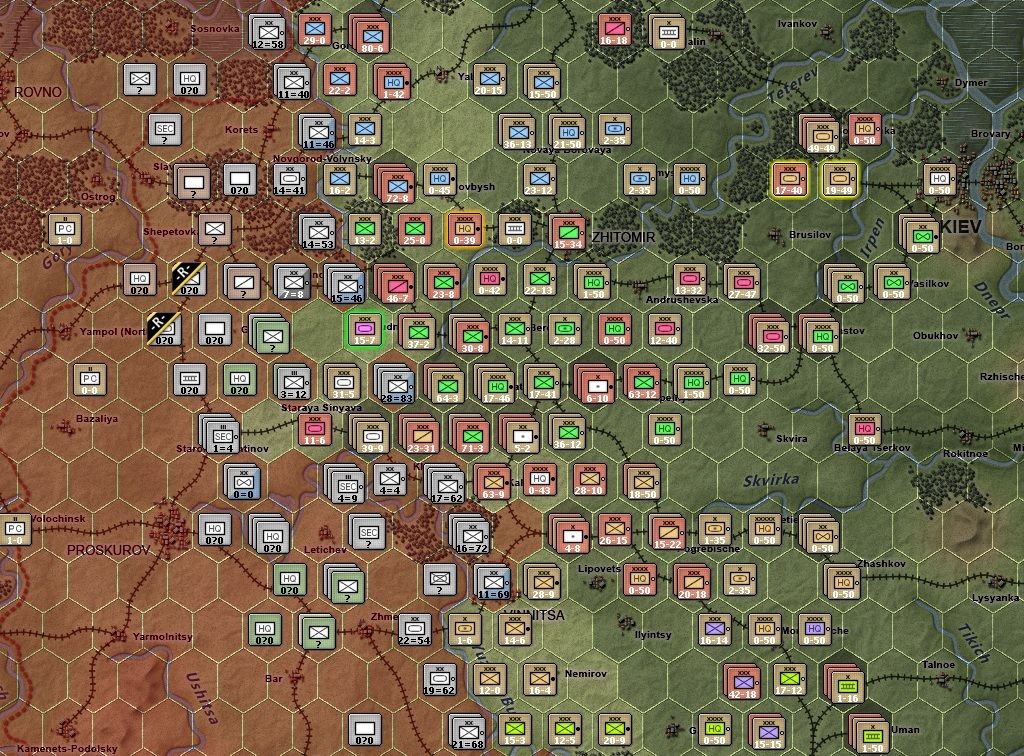
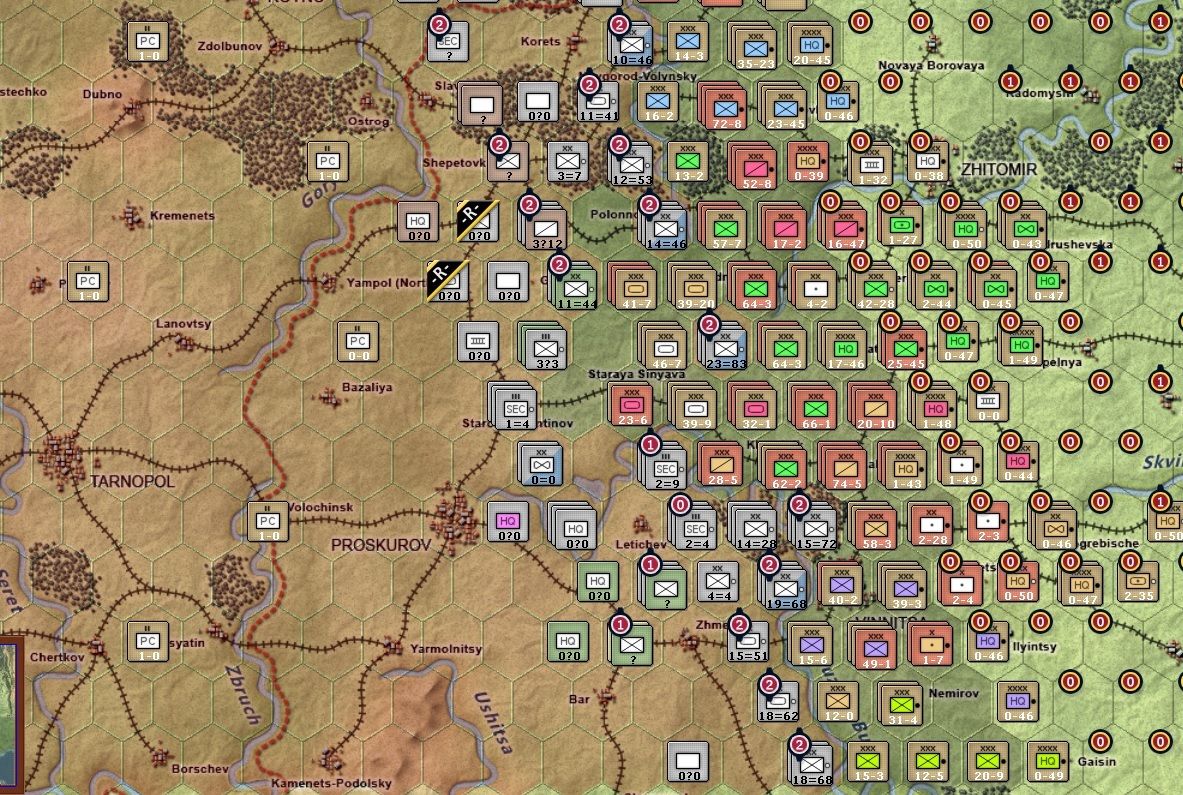
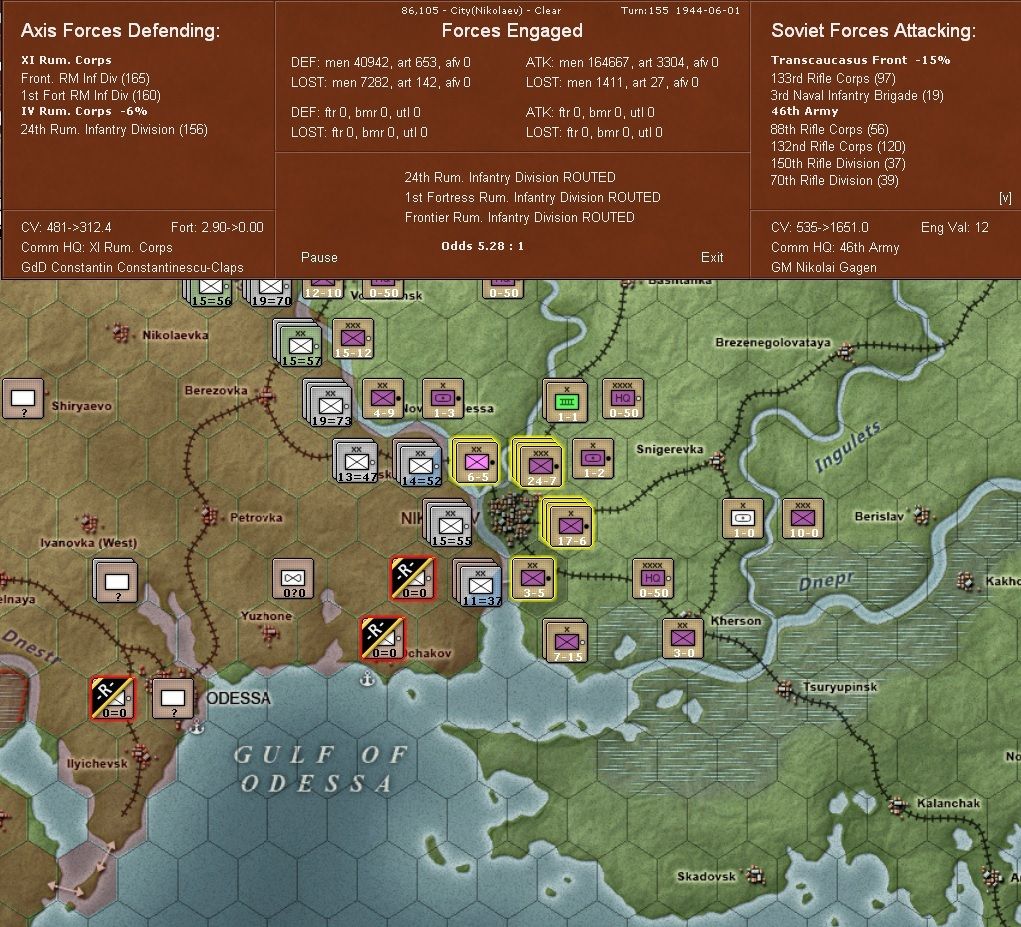




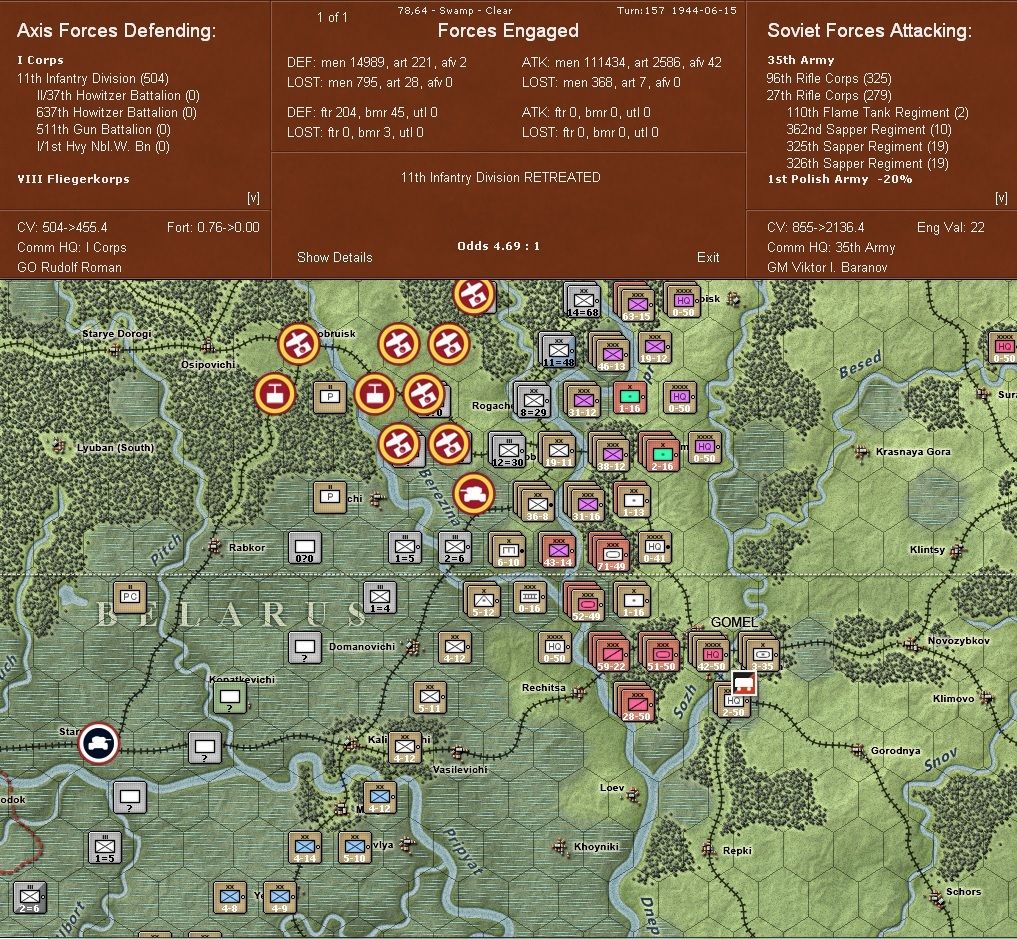
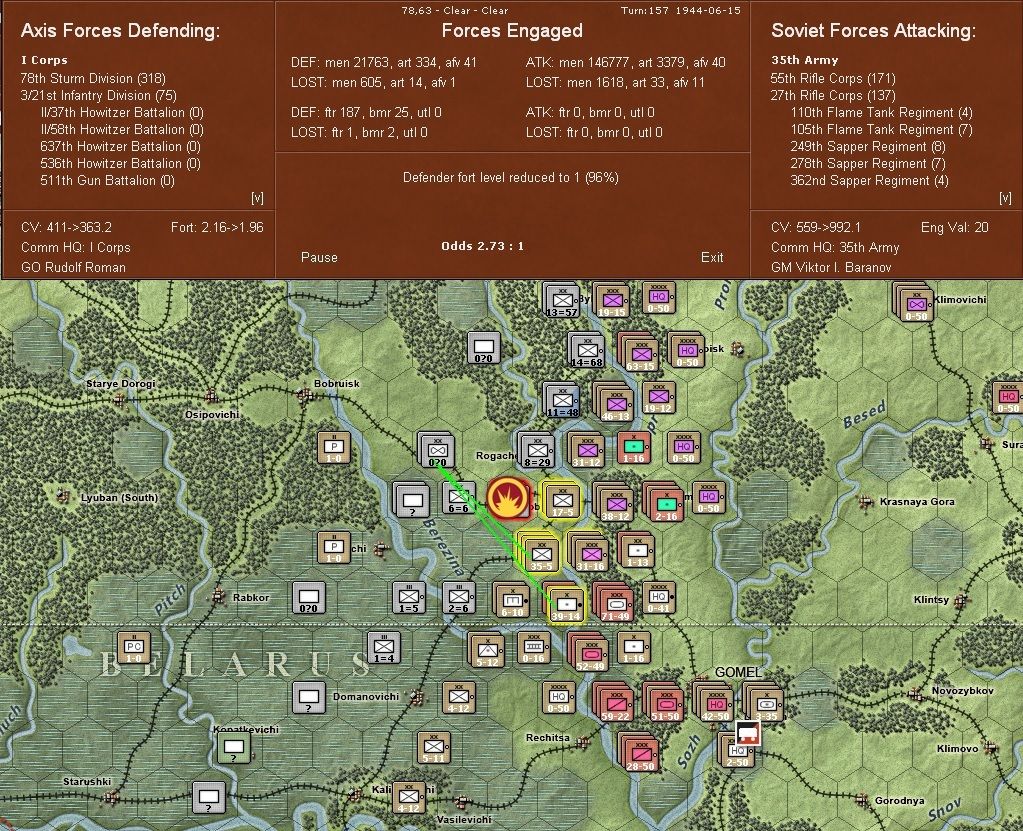
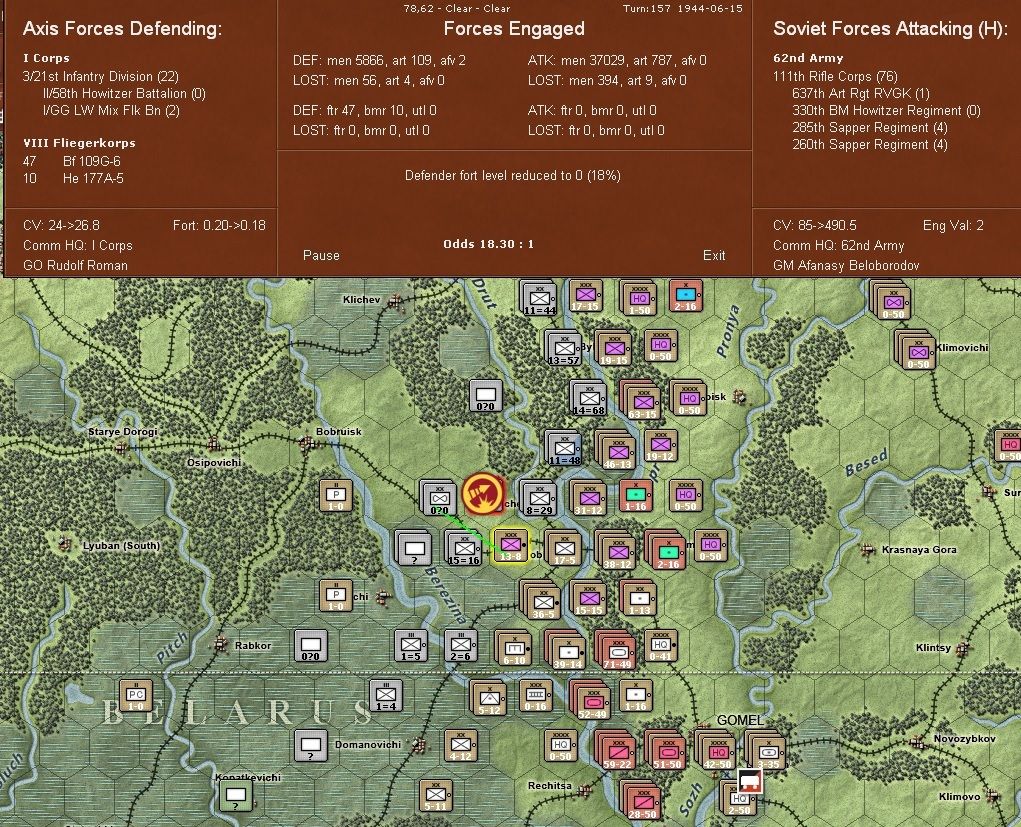

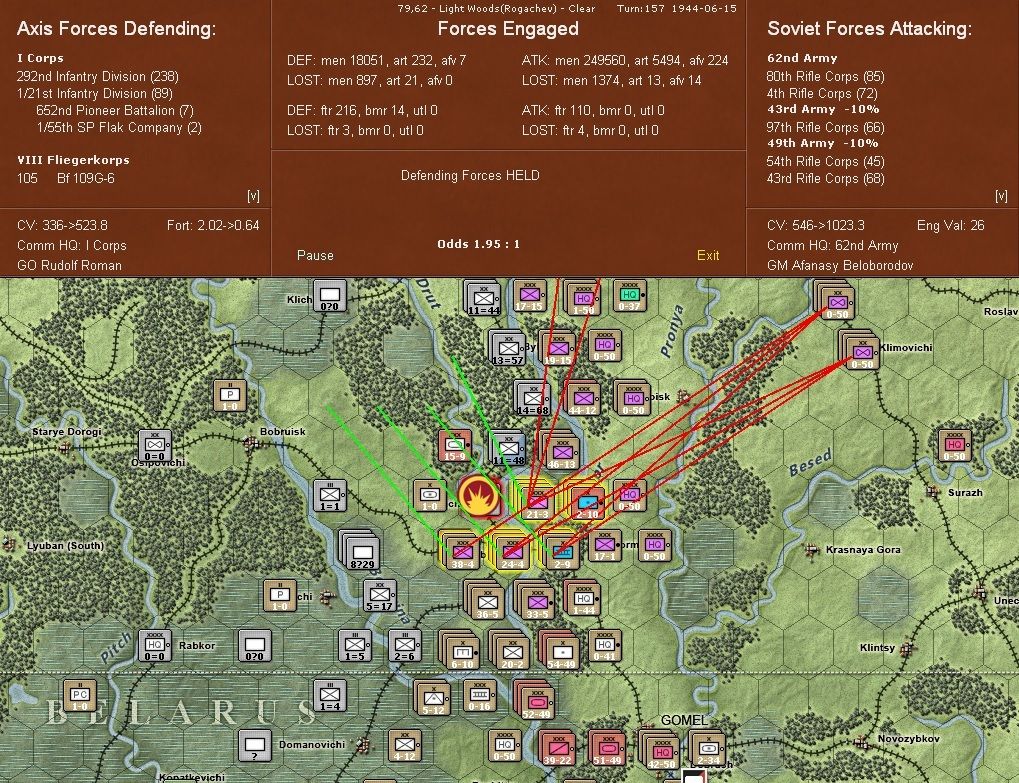

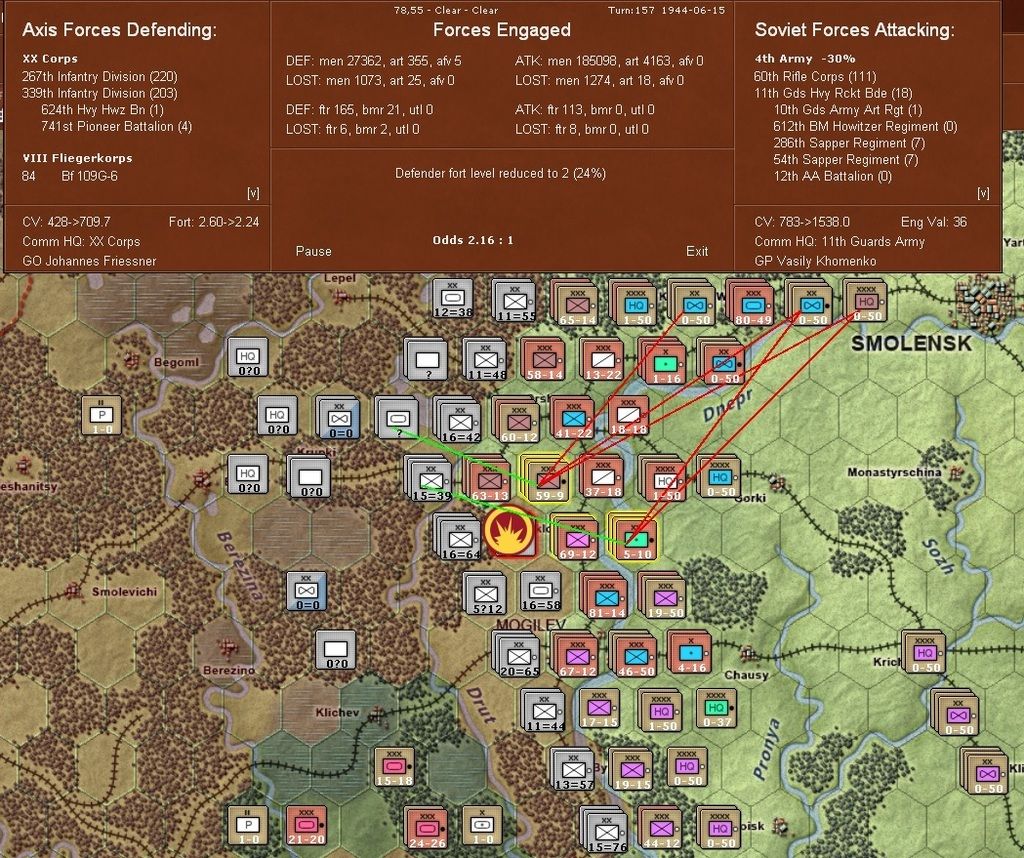


 New Messages
New Messages No New Messages
No New Messages Hot Topic w/ New Messages
Hot Topic w/ New Messages Hot Topic w/o New Messages
Hot Topic w/o New Messages Locked w/ New Messages
Locked w/ New Messages Locked w/o New Messages
Locked w/o New Messages Post New Thread
Post New Thread